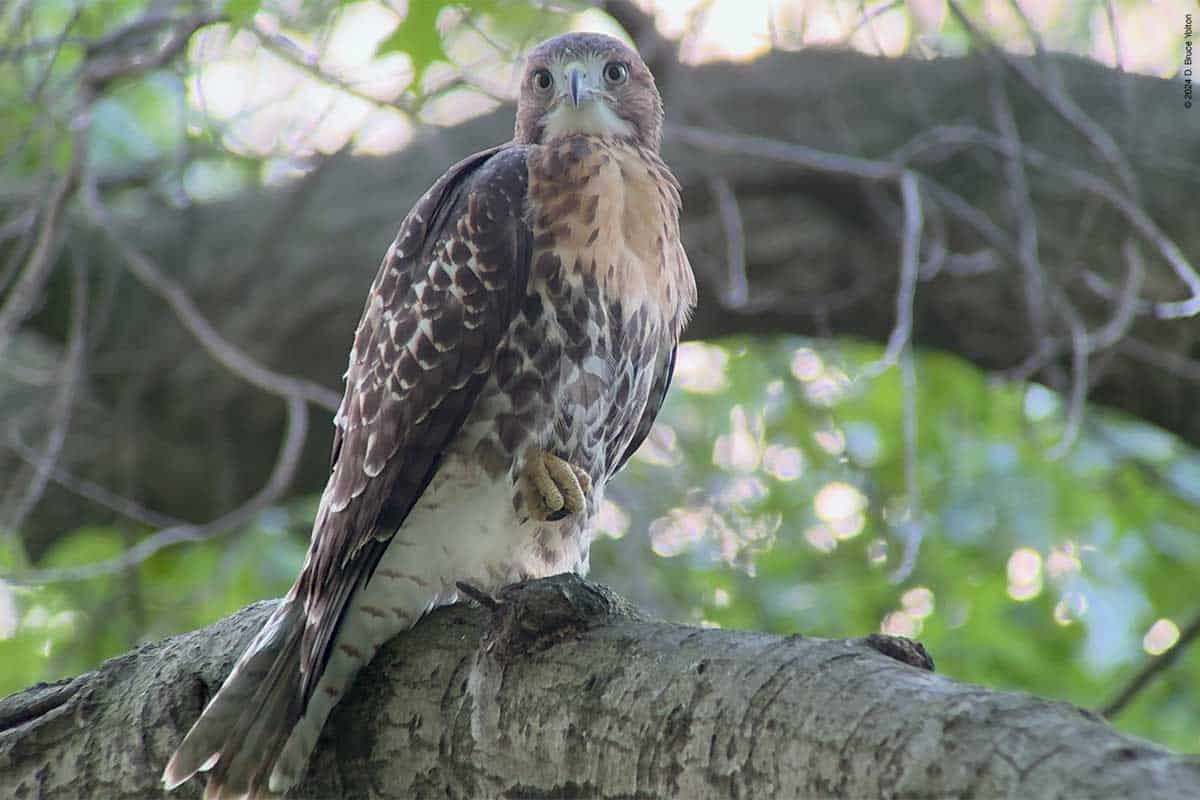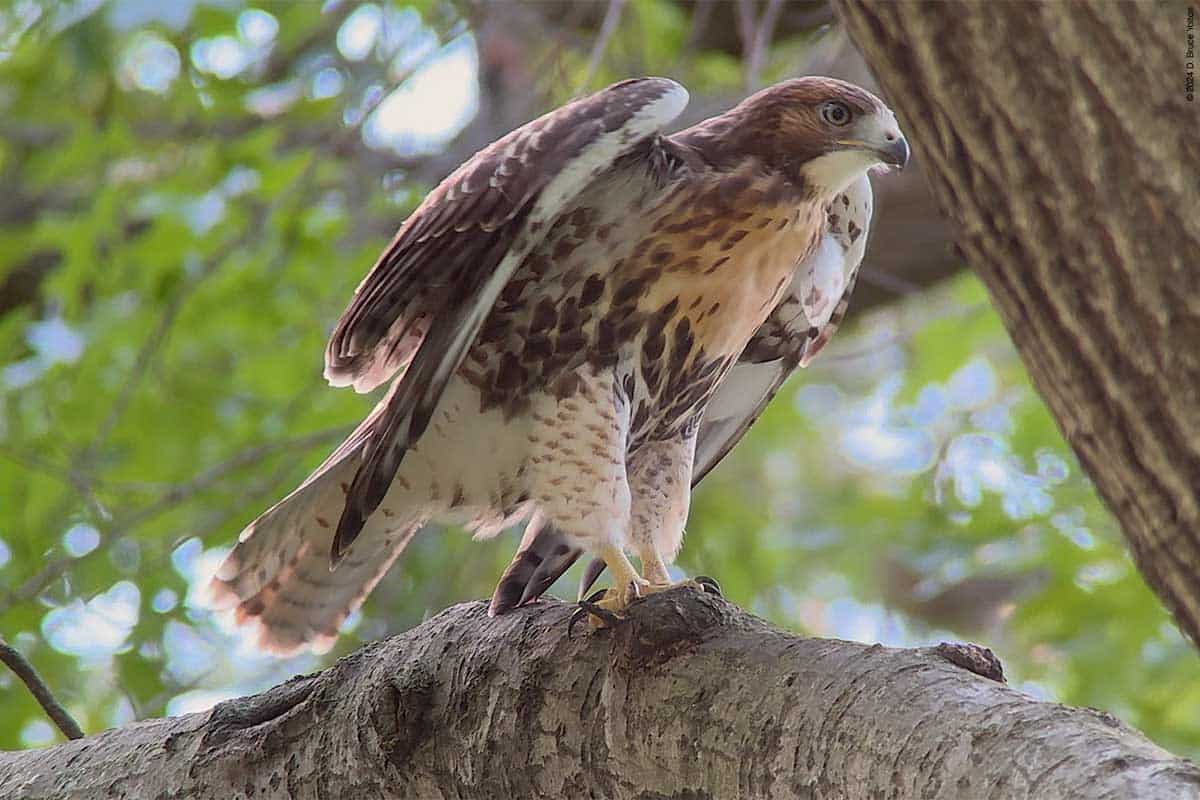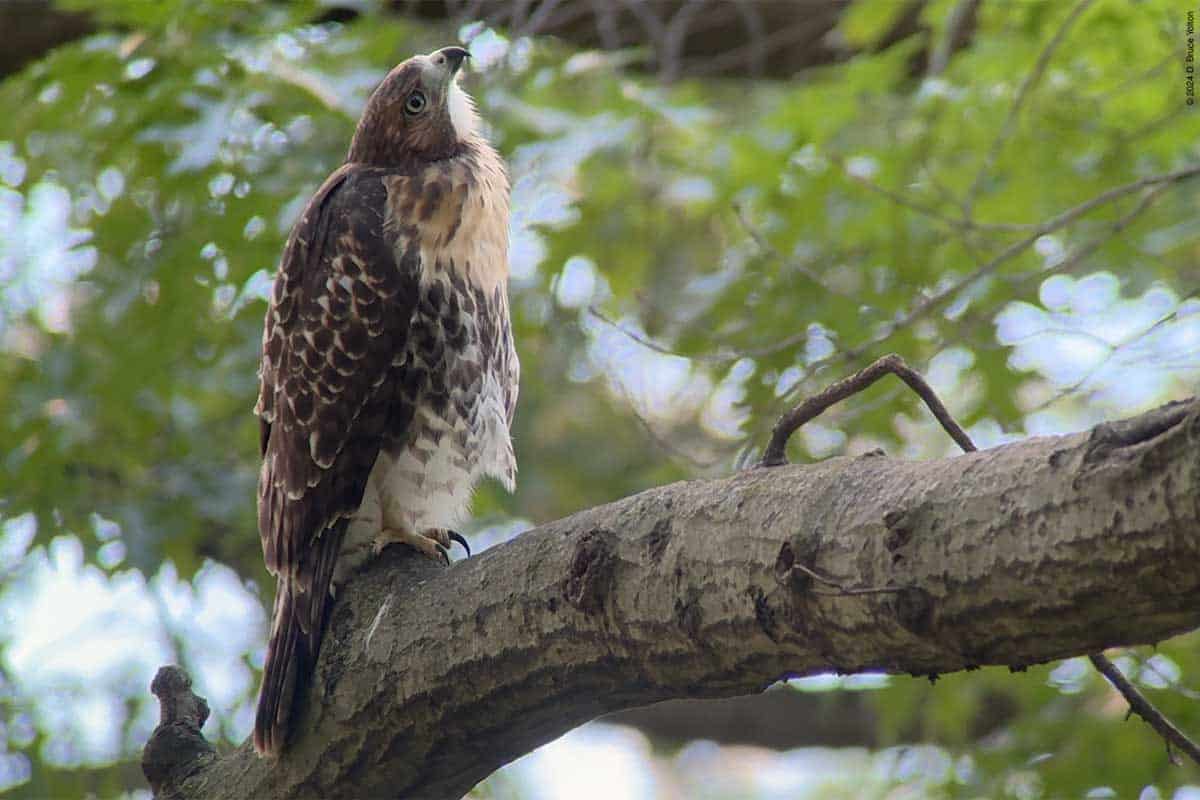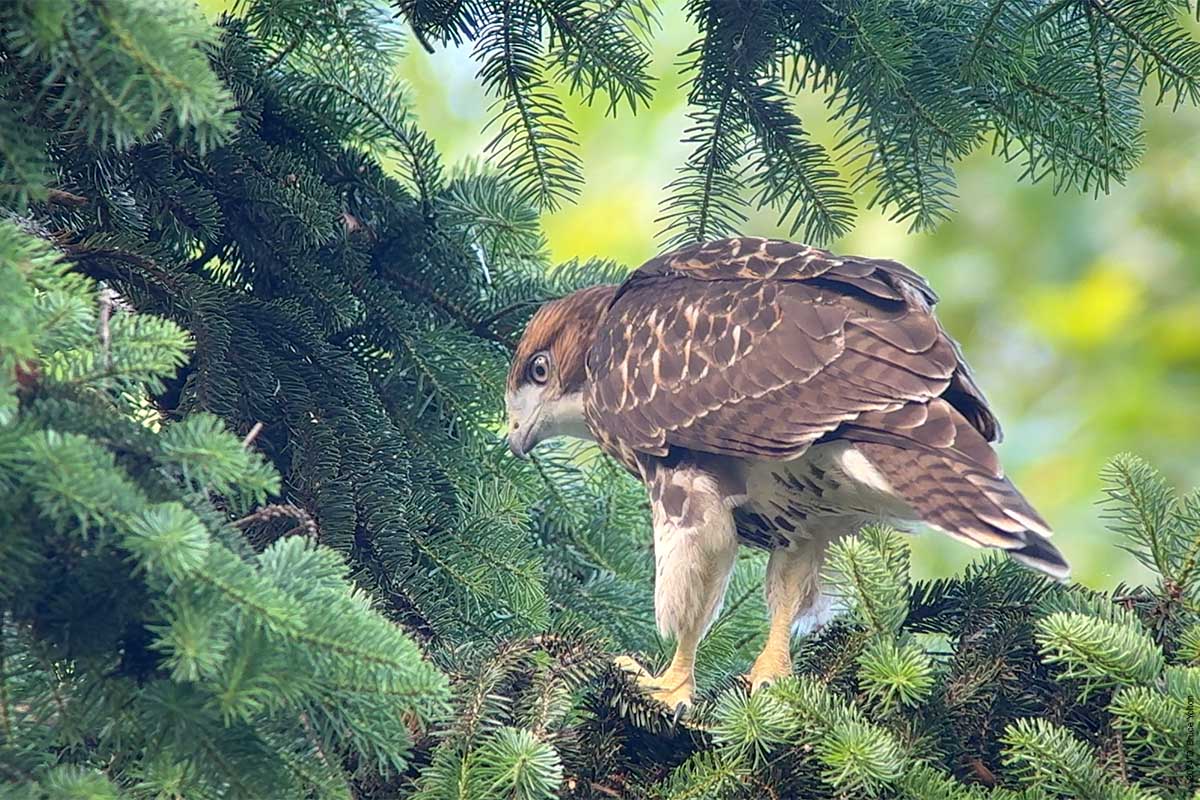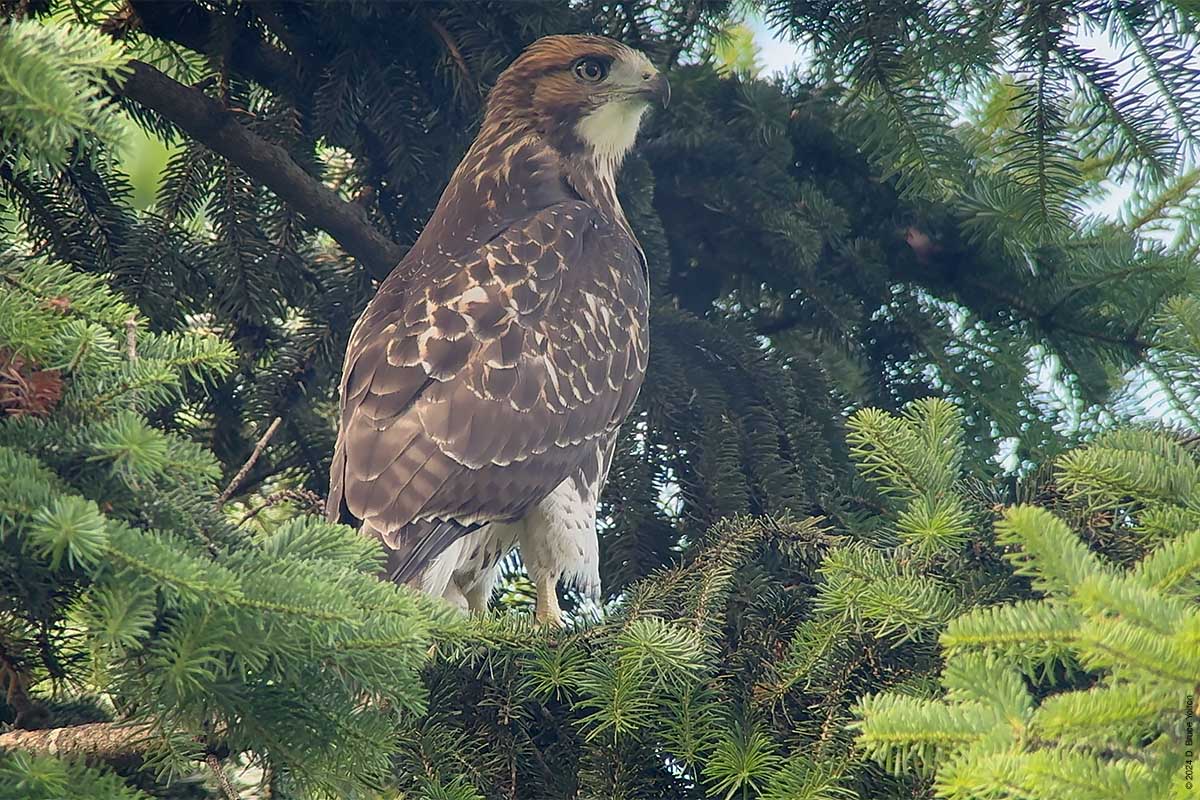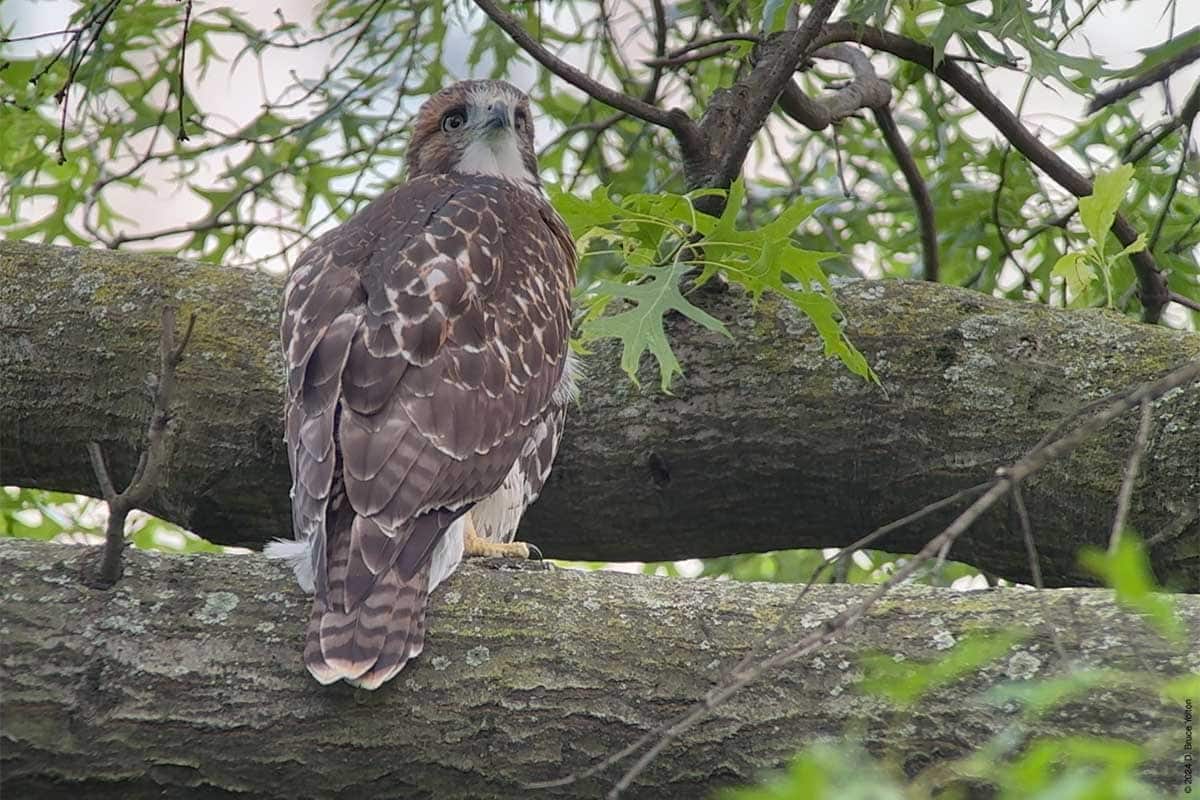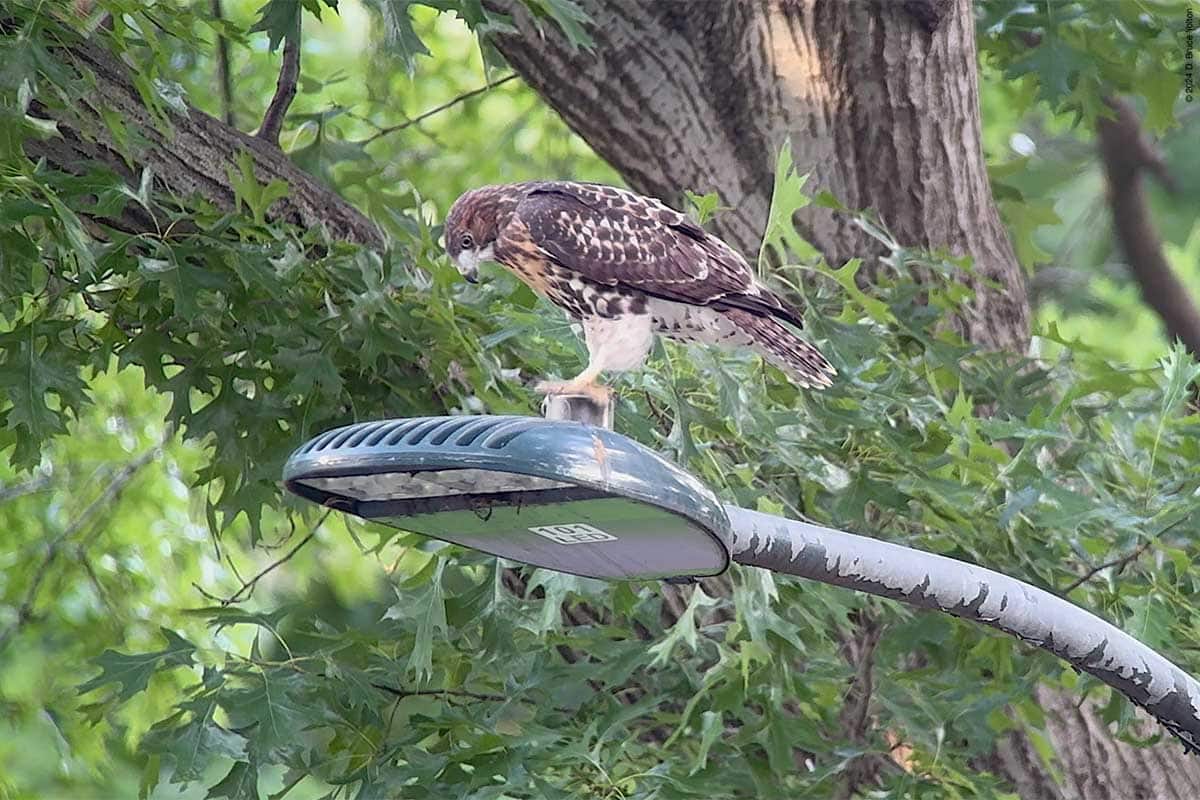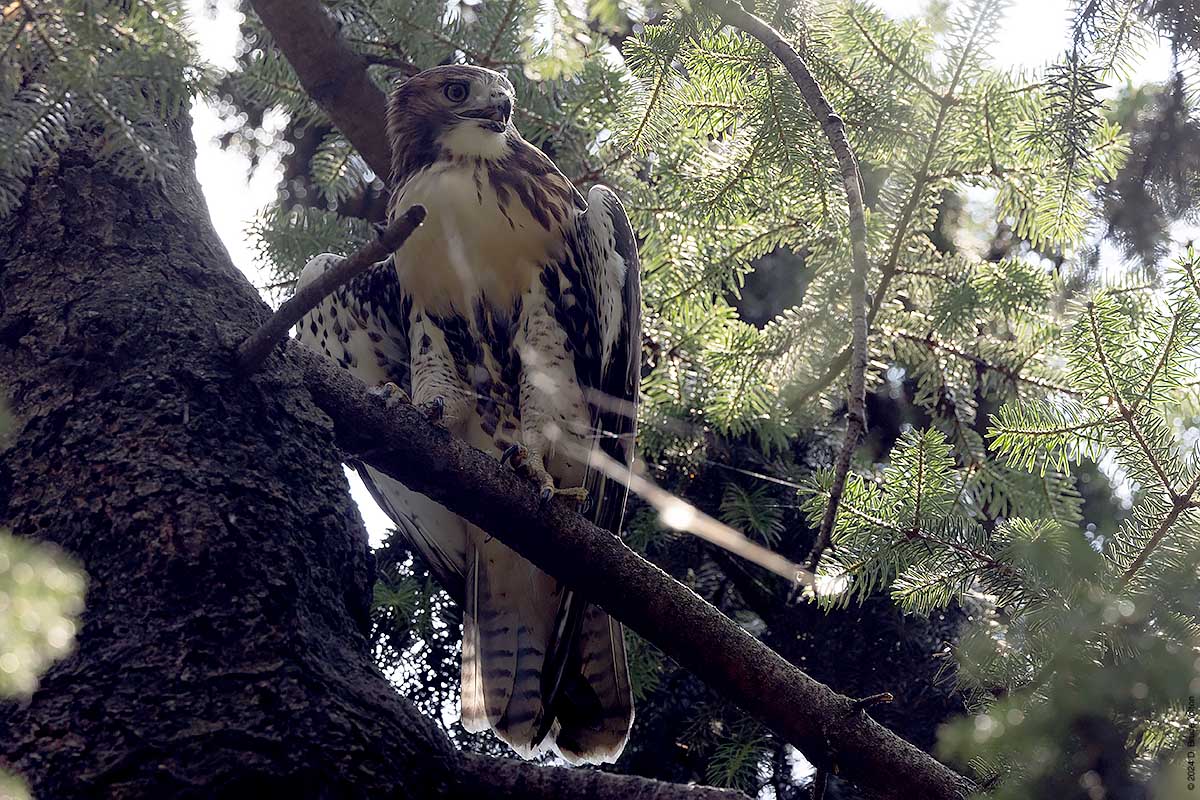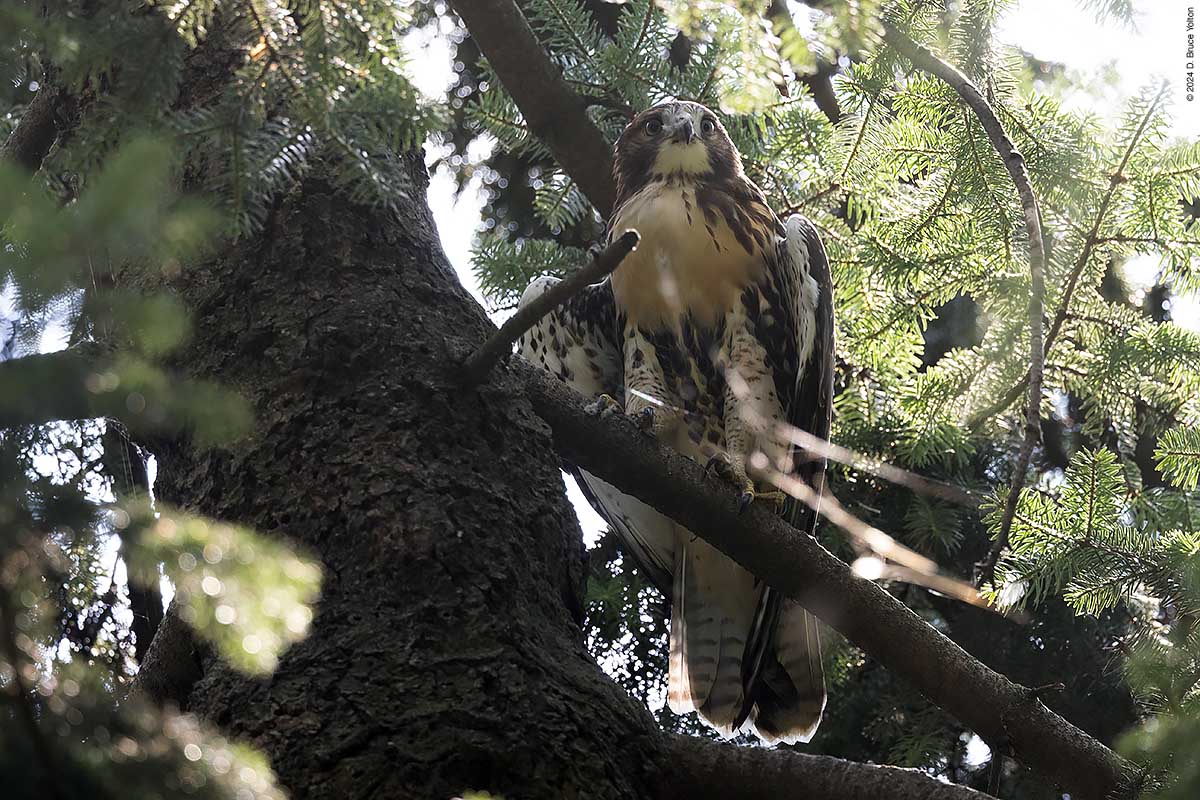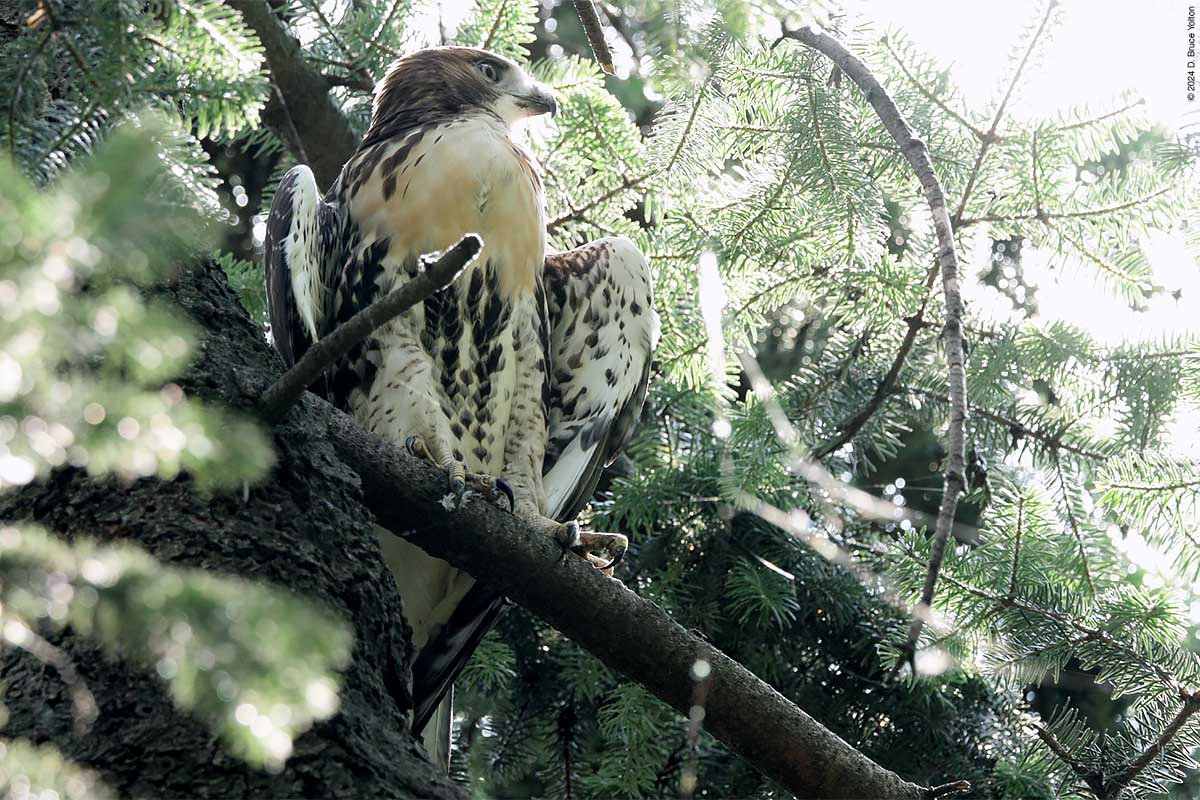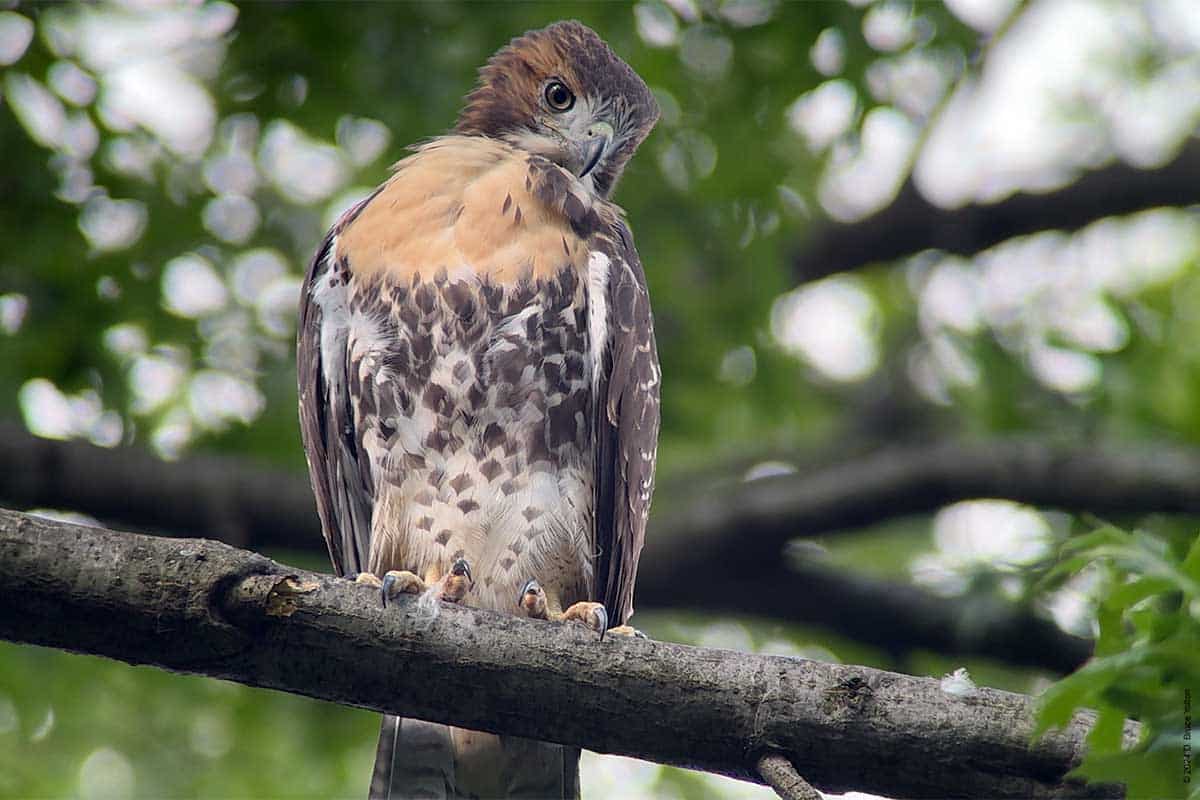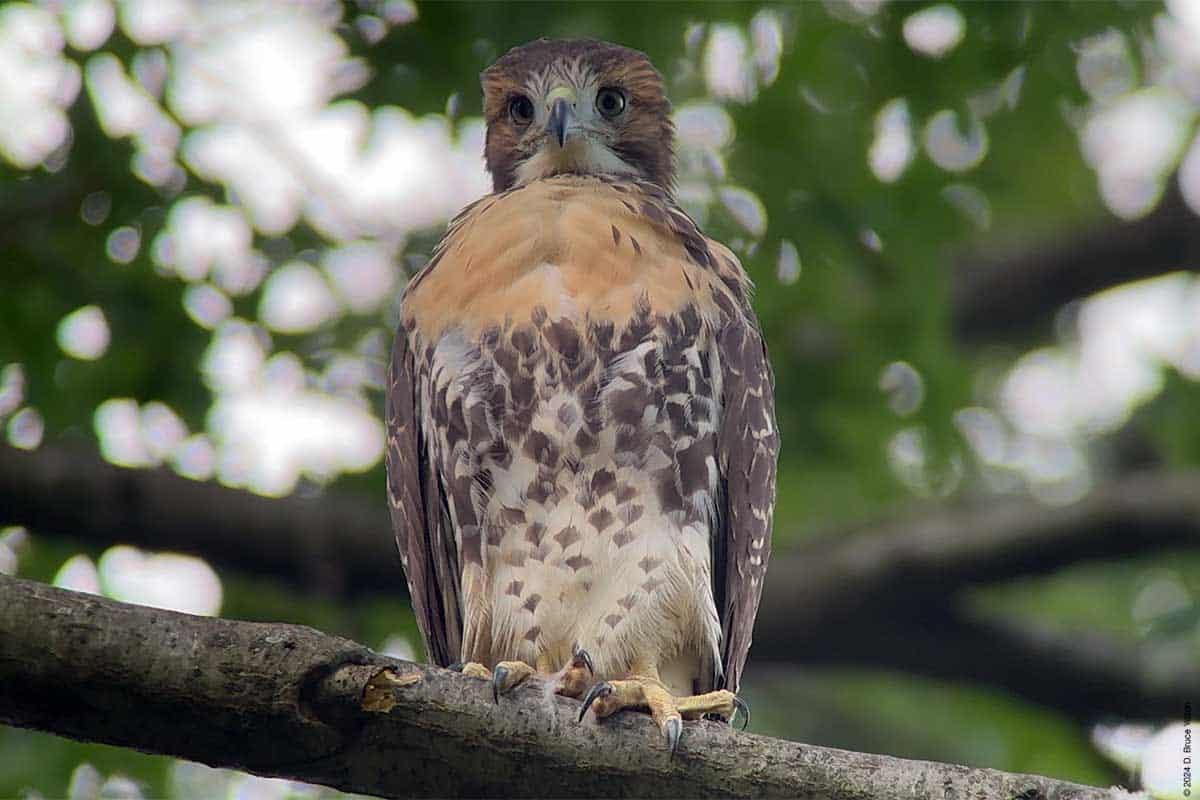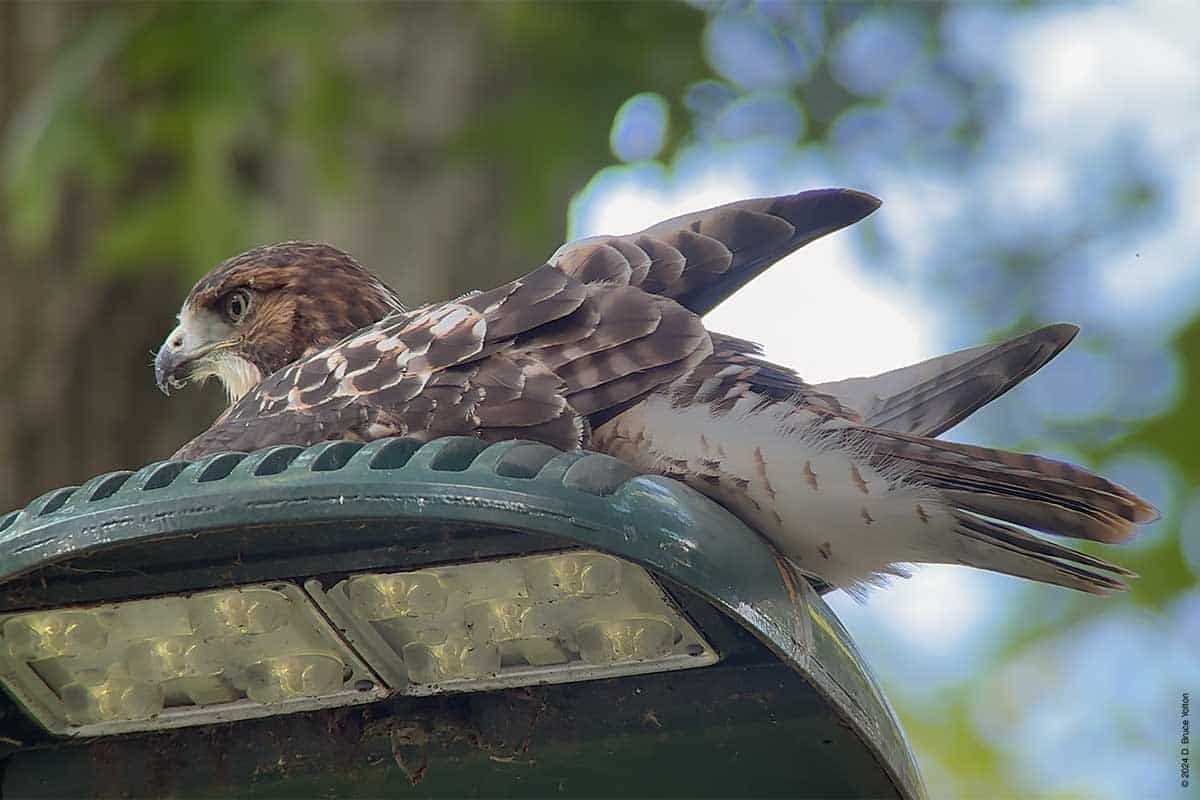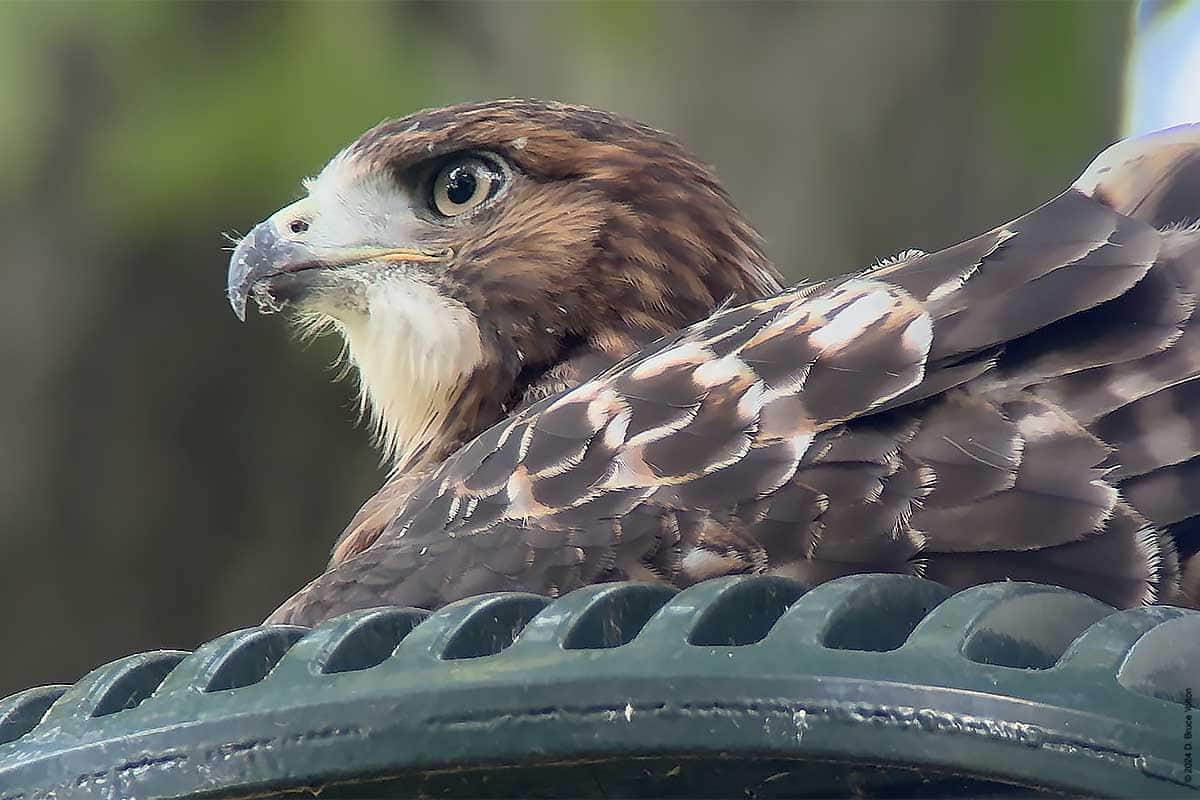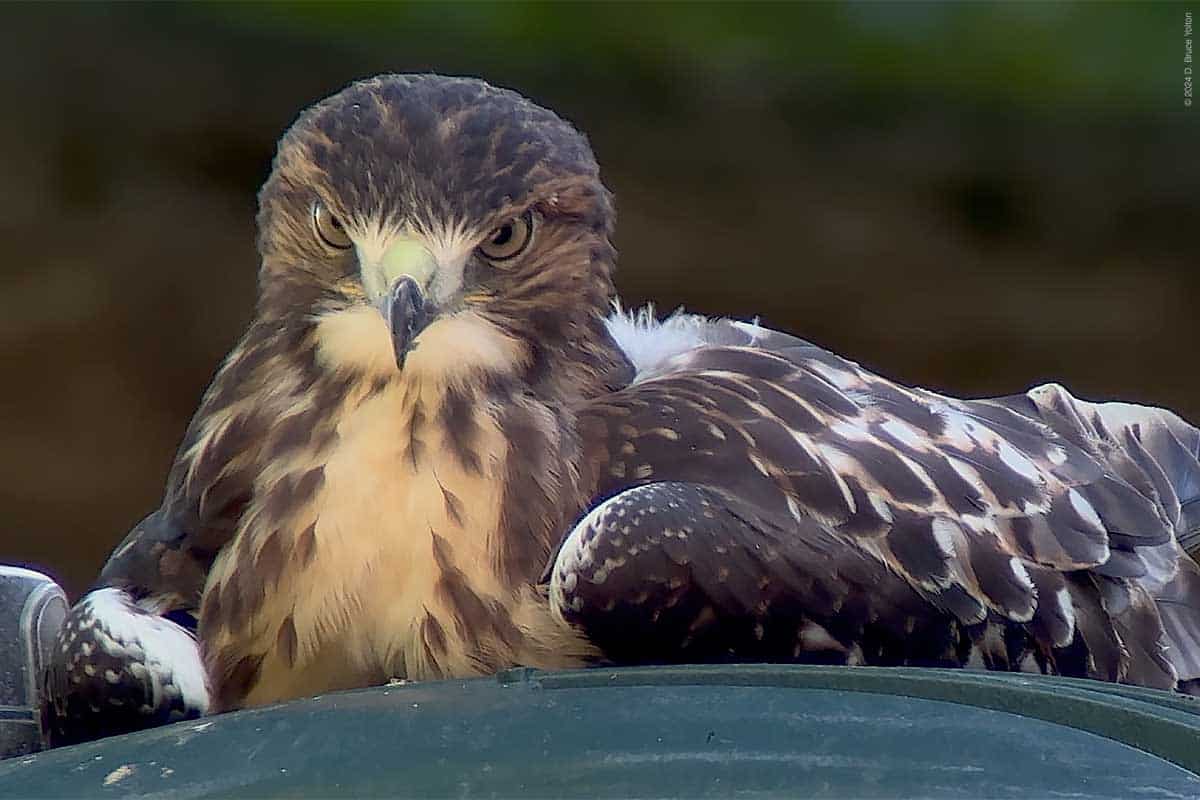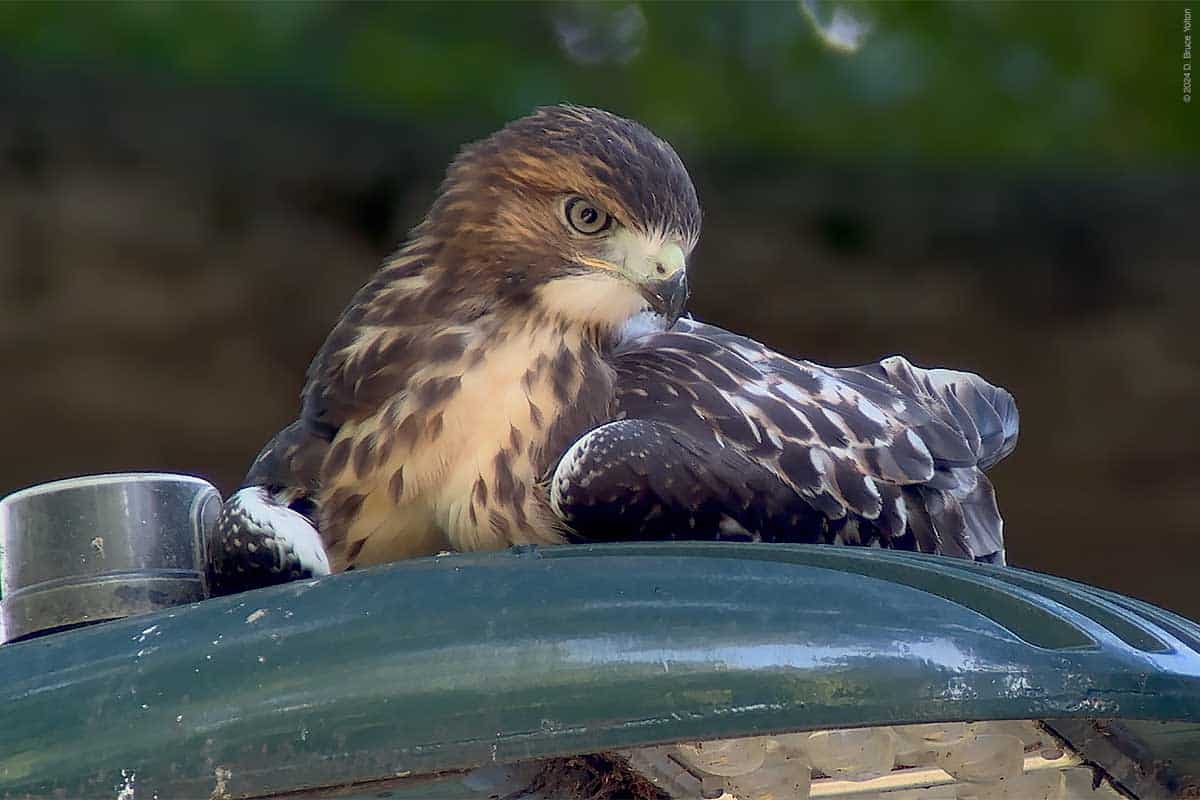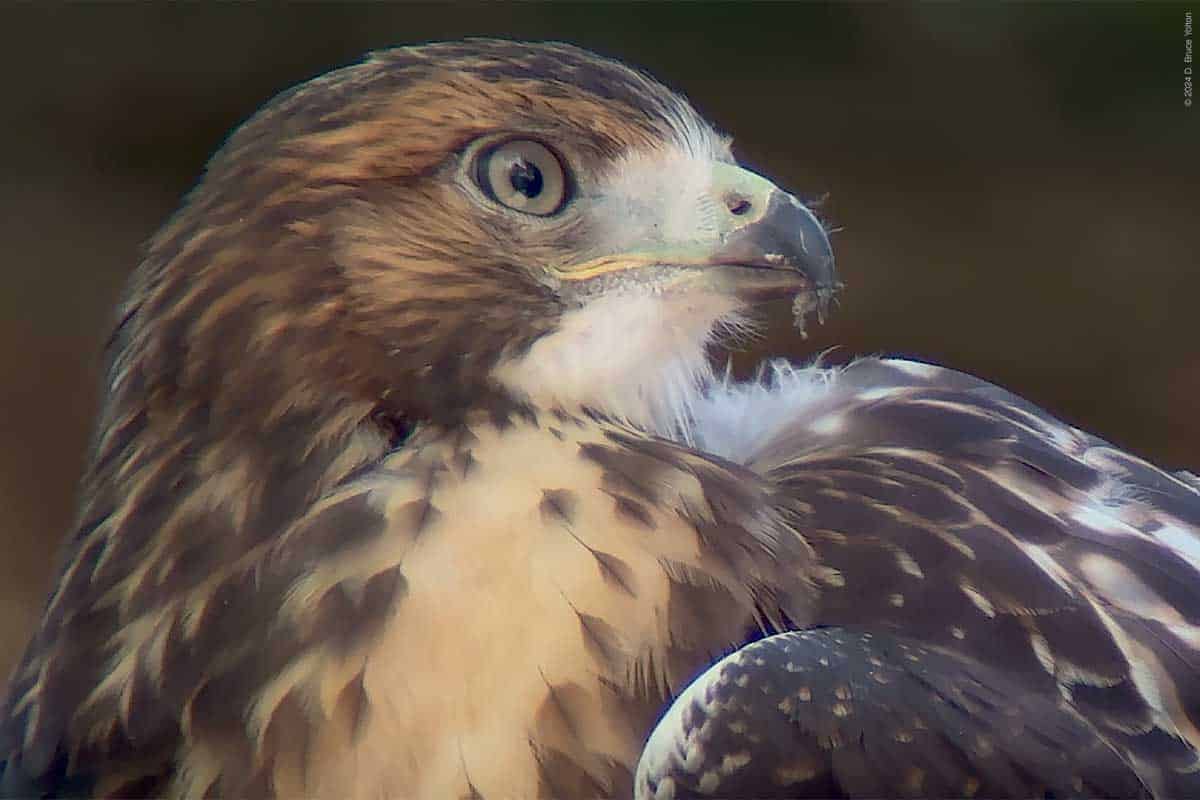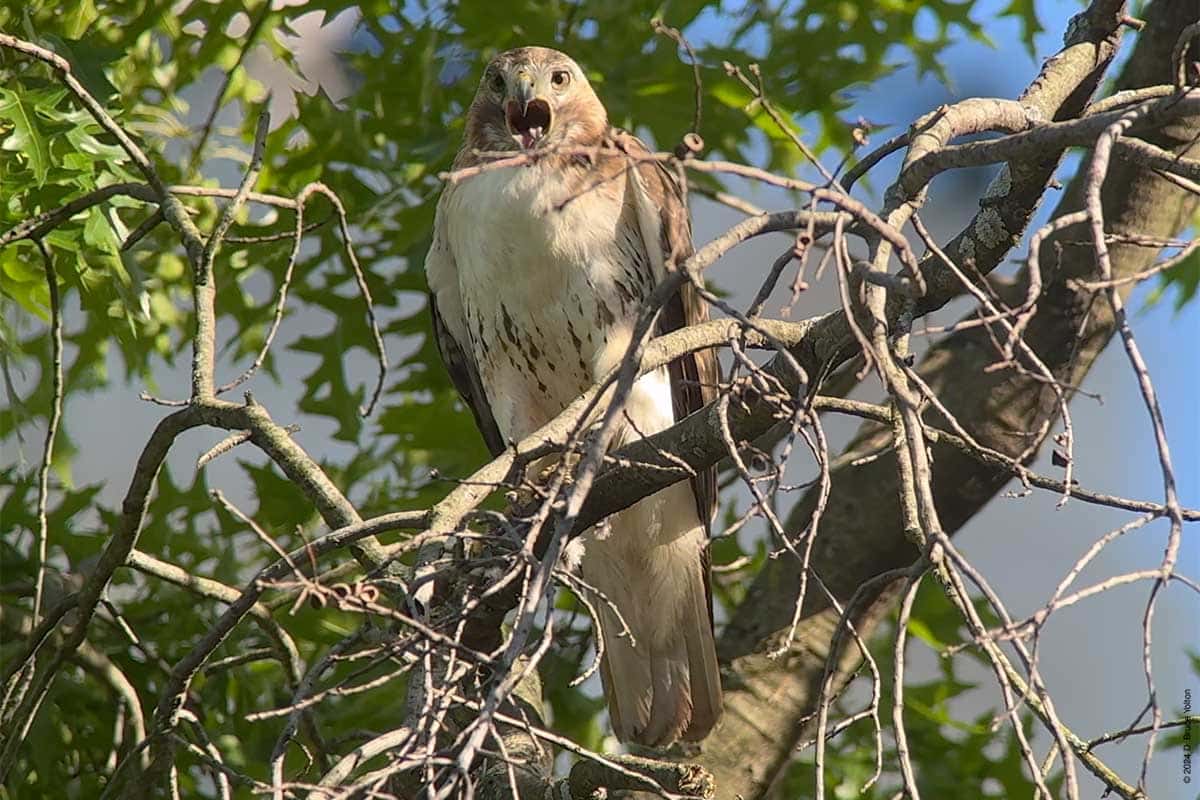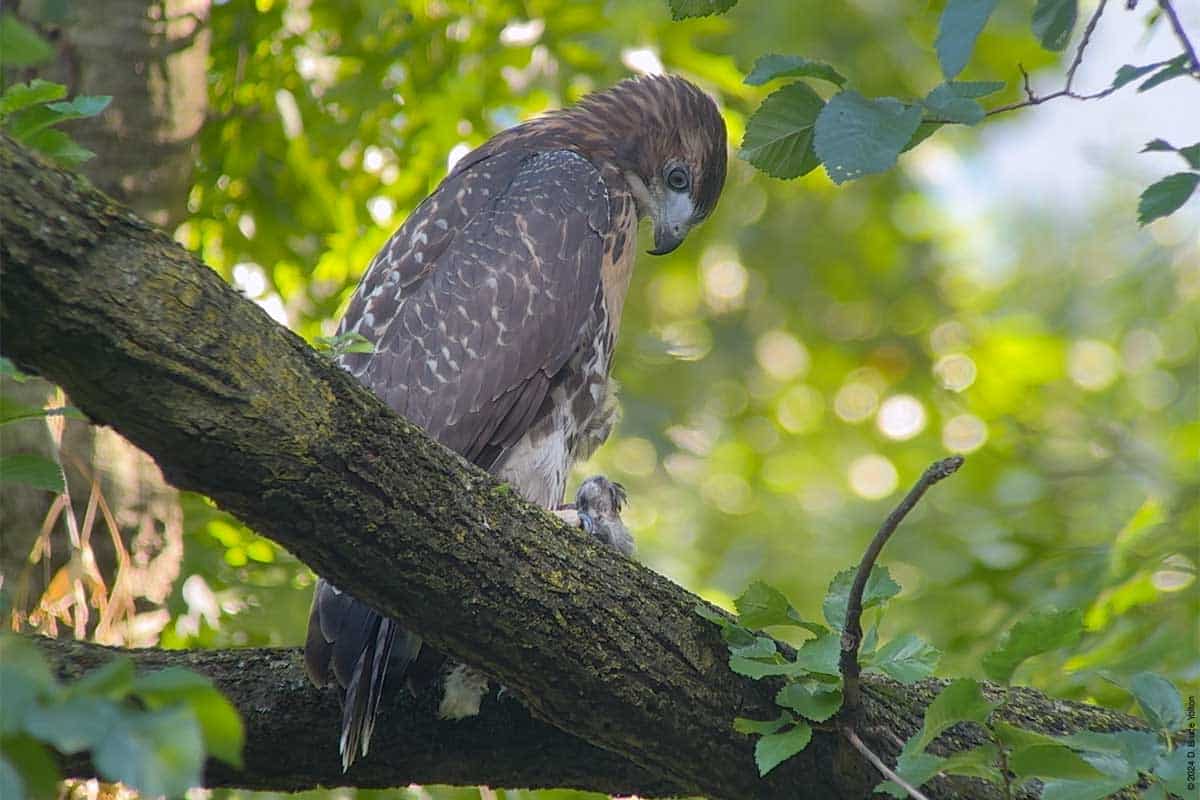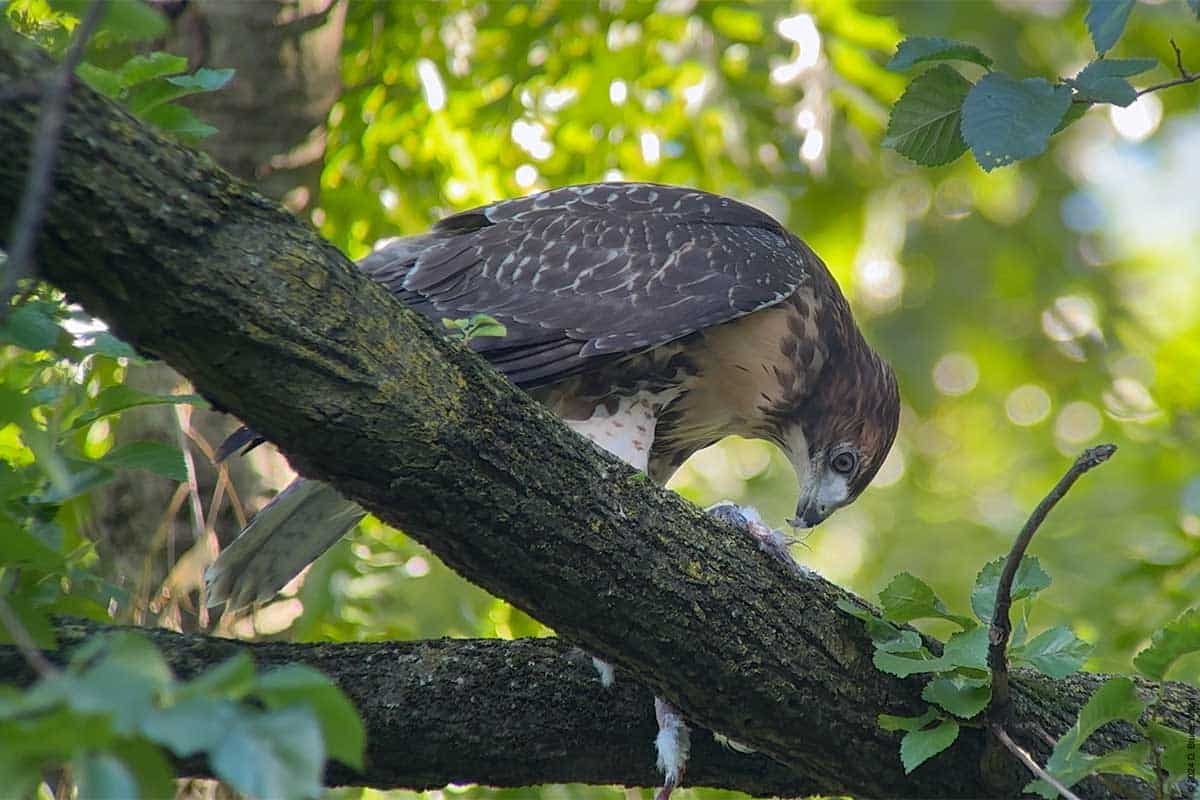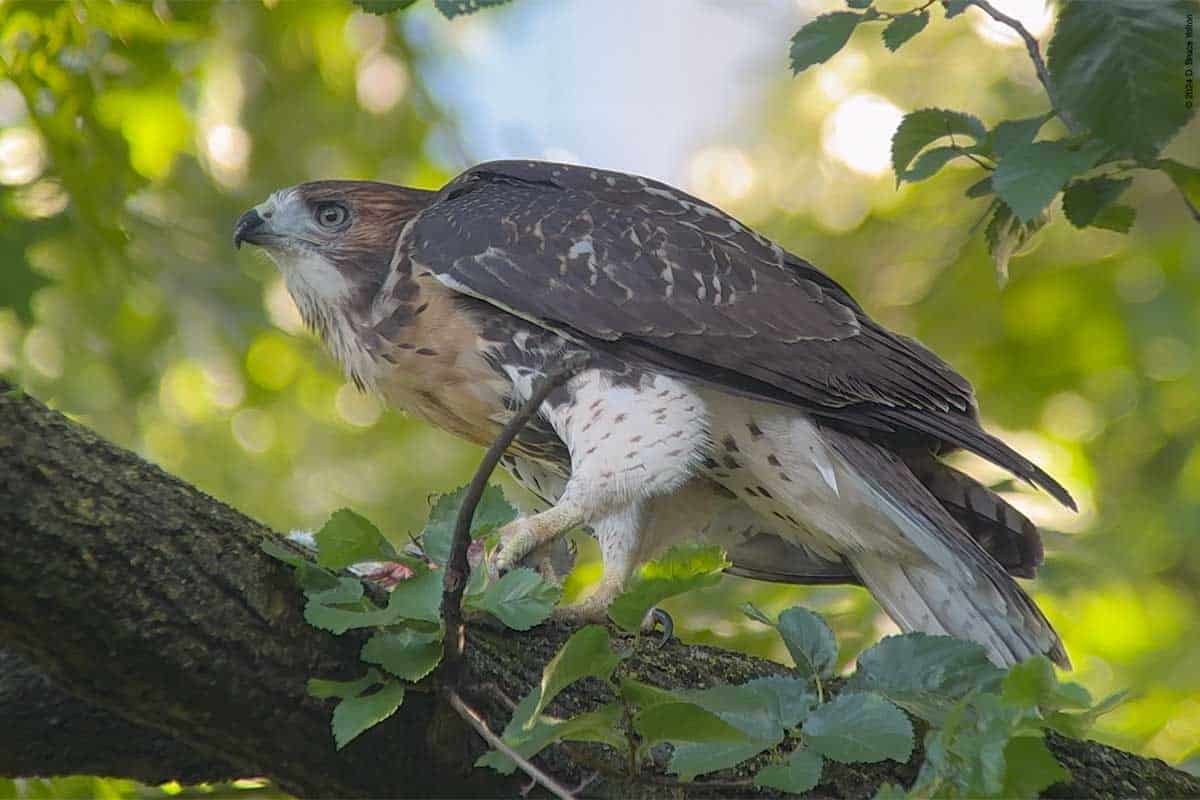Category: Southern Central Park Red-tailed Hawks
NYAC on Thursday
I made my last hawk watching stop before going on vacation for ten days at the NYAC. The fledglings are still hanging out in the same area with some exceptions. One decided to scare up the pigeons that eat the horse feed just inside the park at 7th Avenue, before perching on the Essex House. I also saw their mother on top of Trump International Hotel & Tower for the first time.
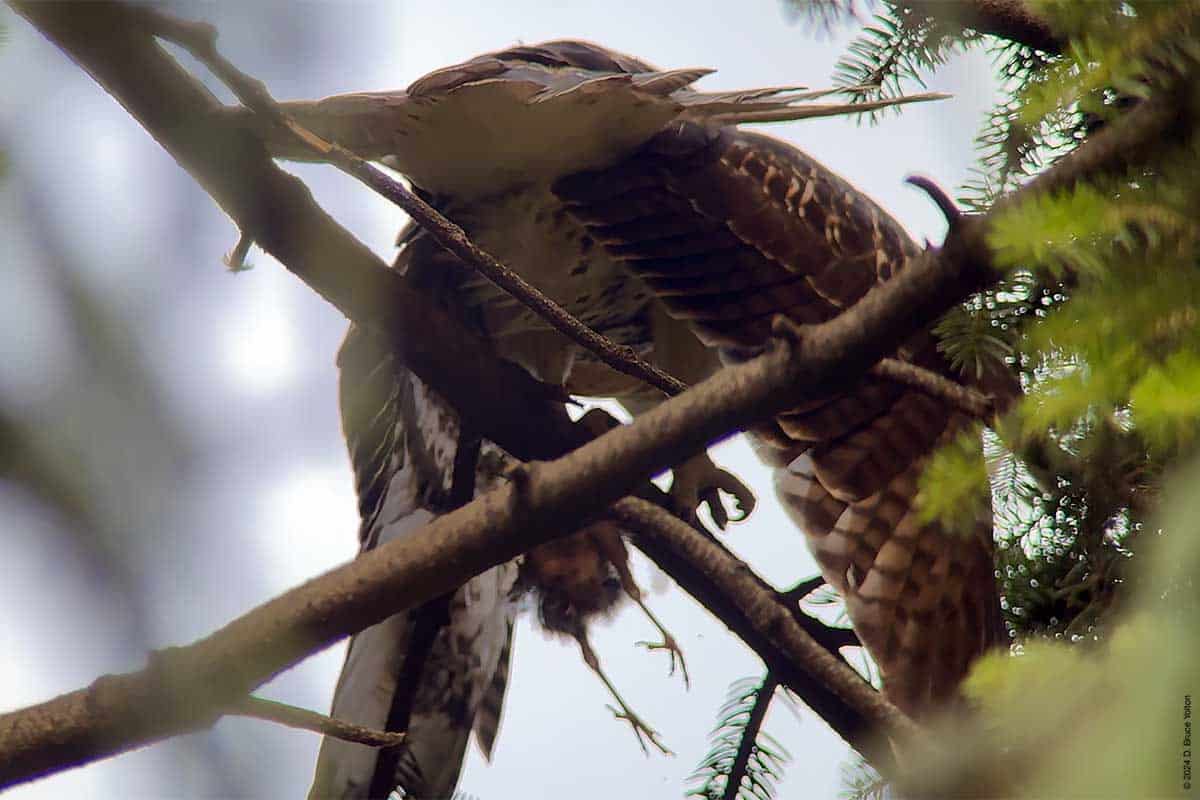
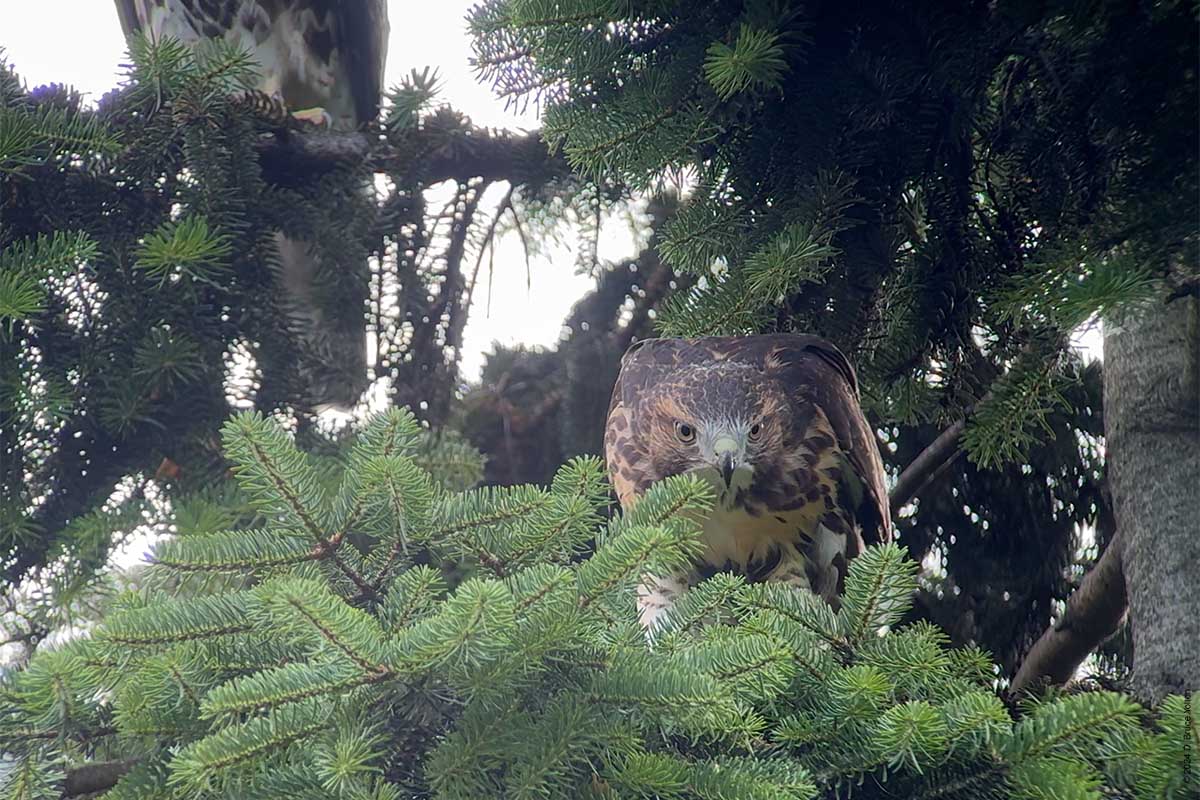
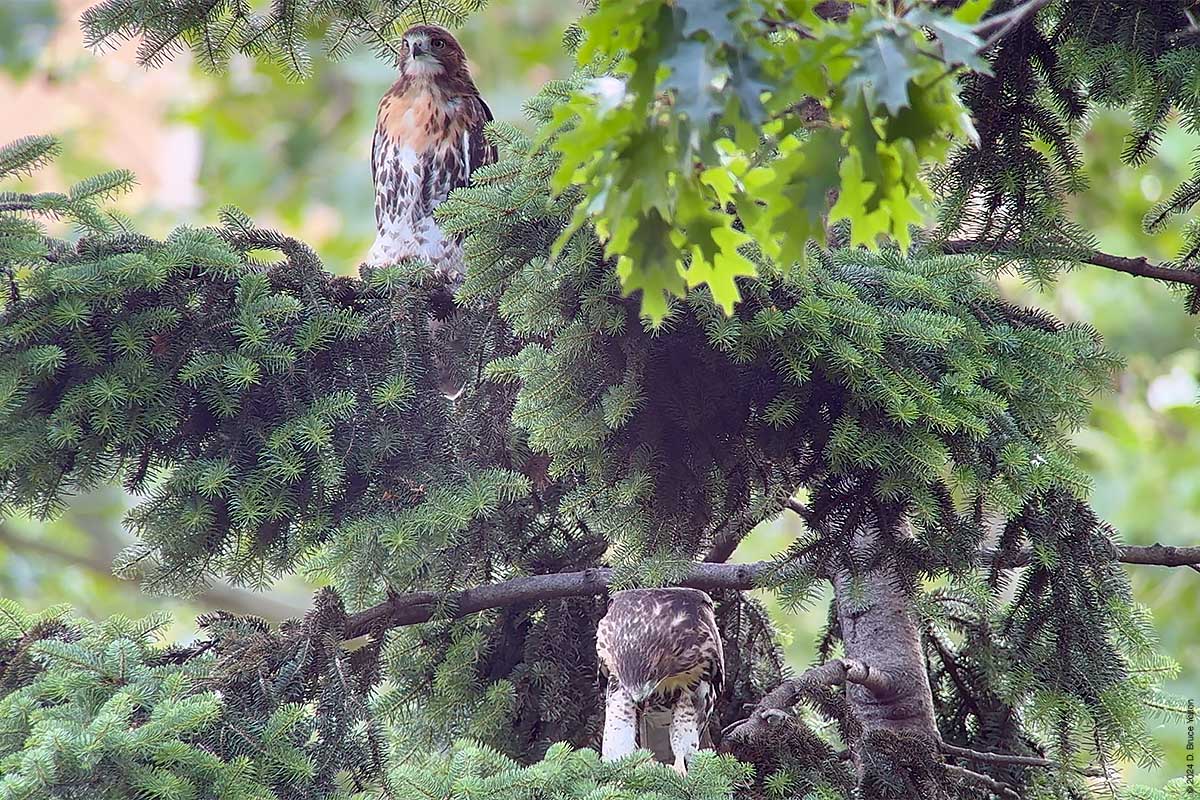
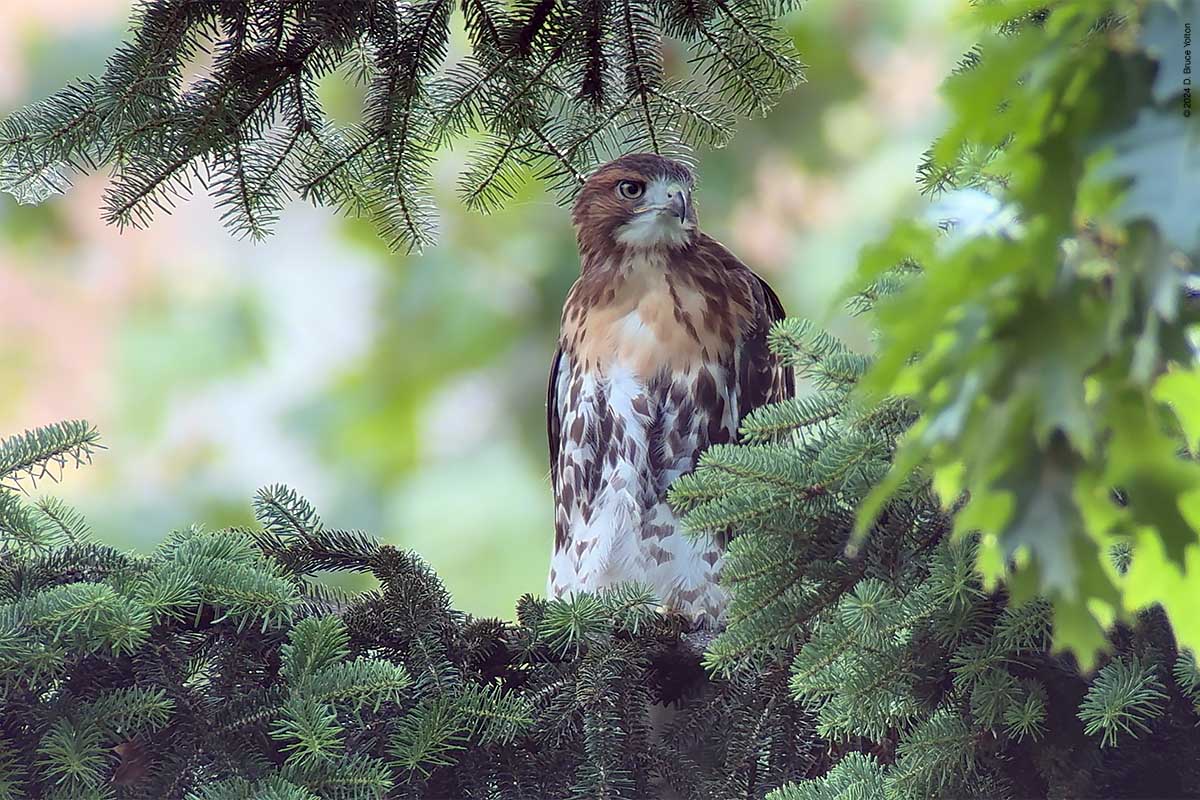
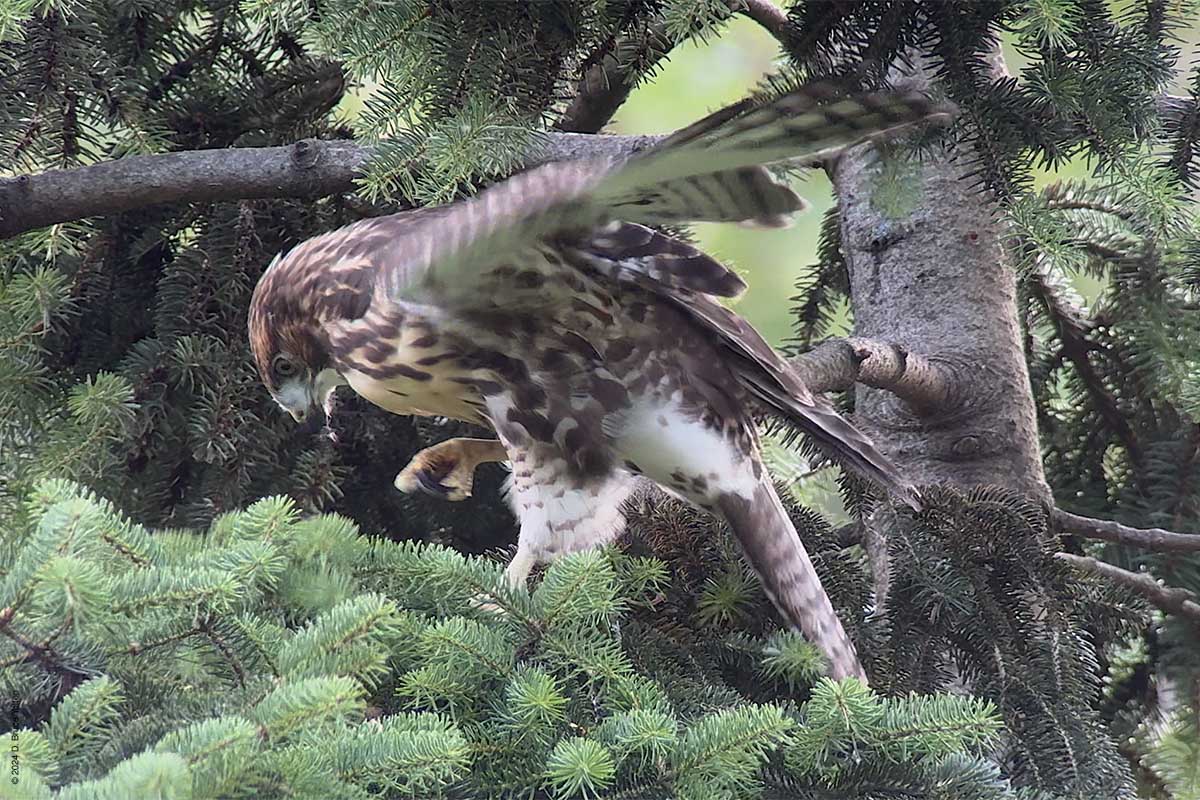
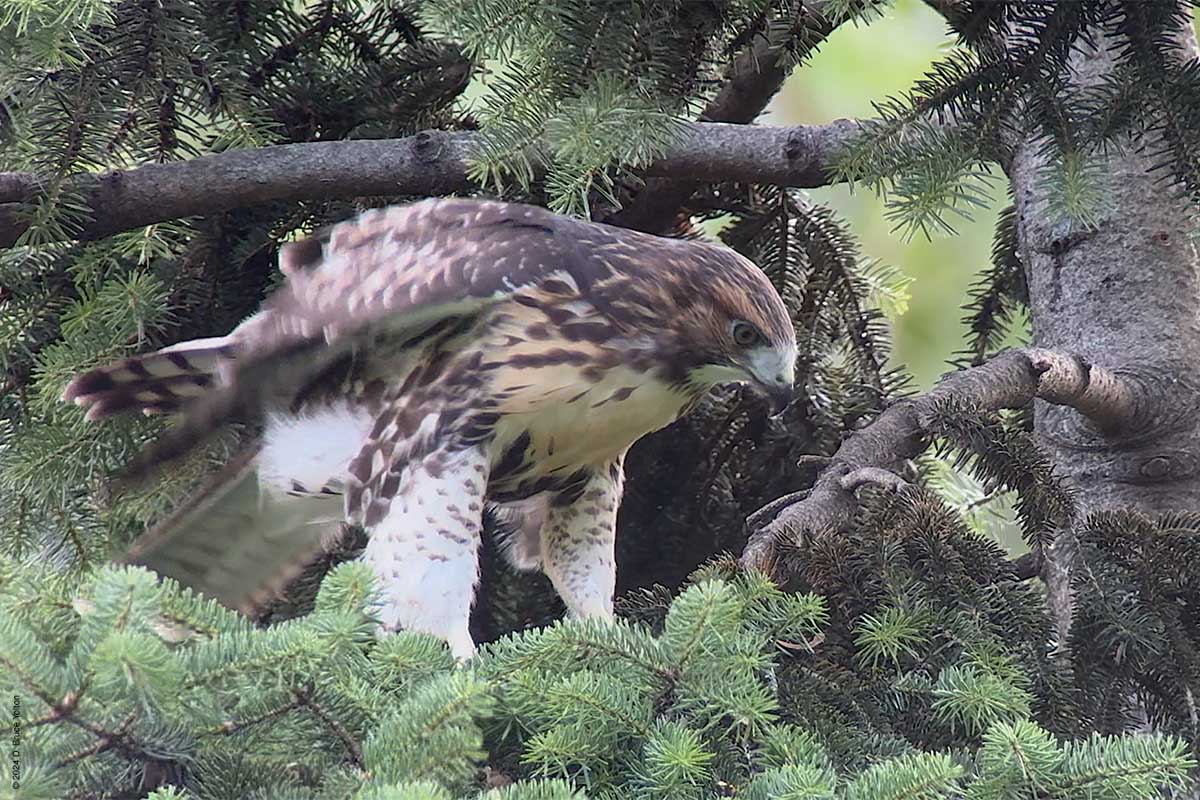
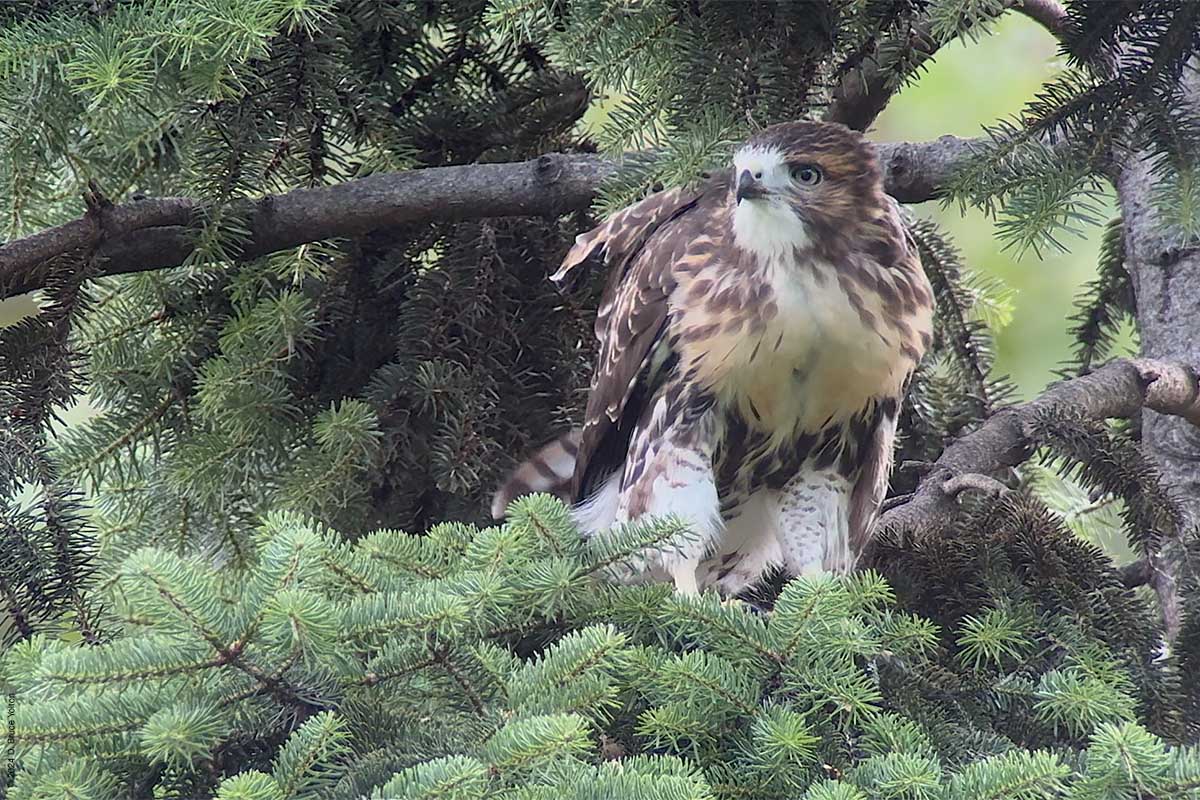
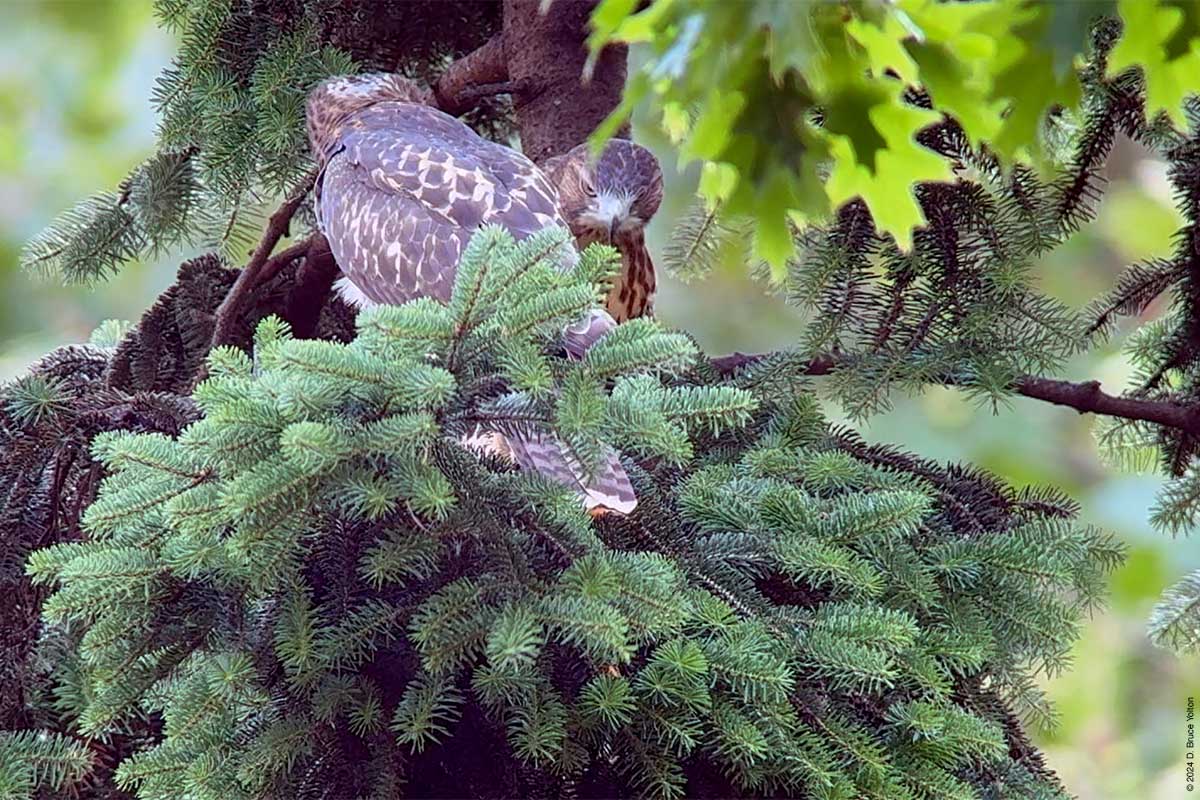
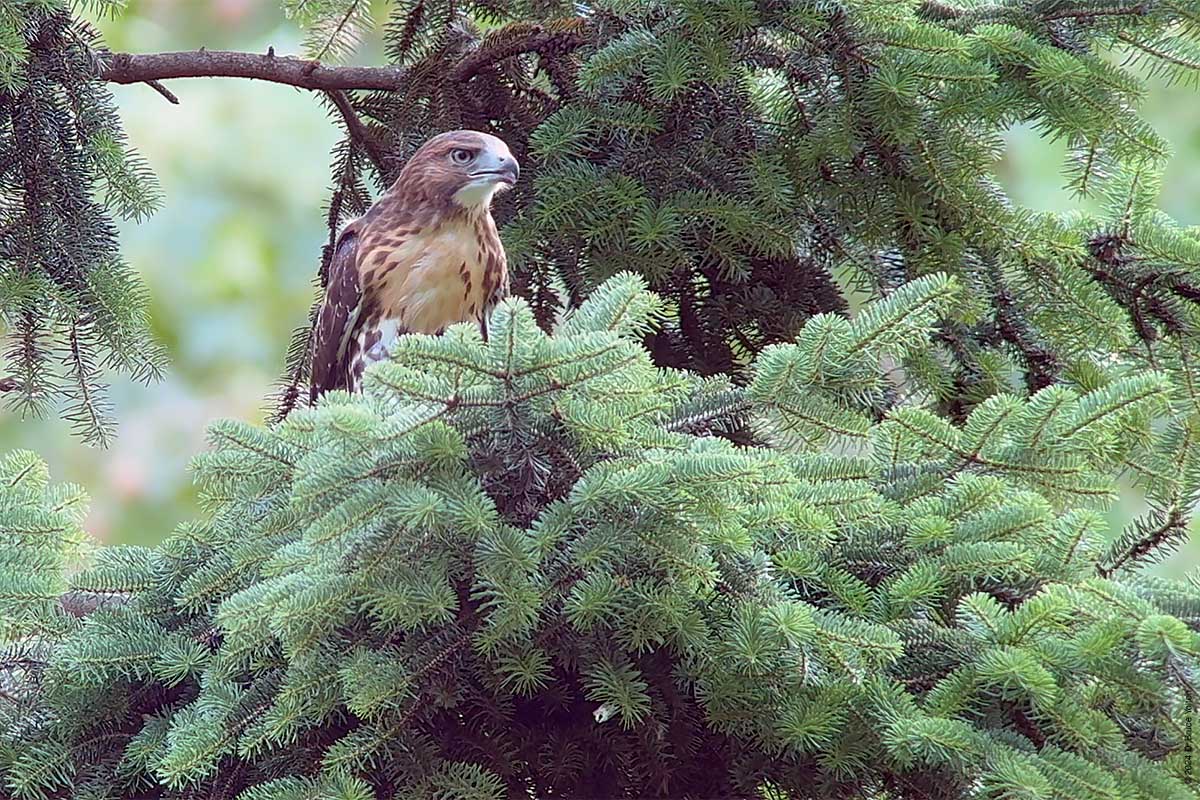
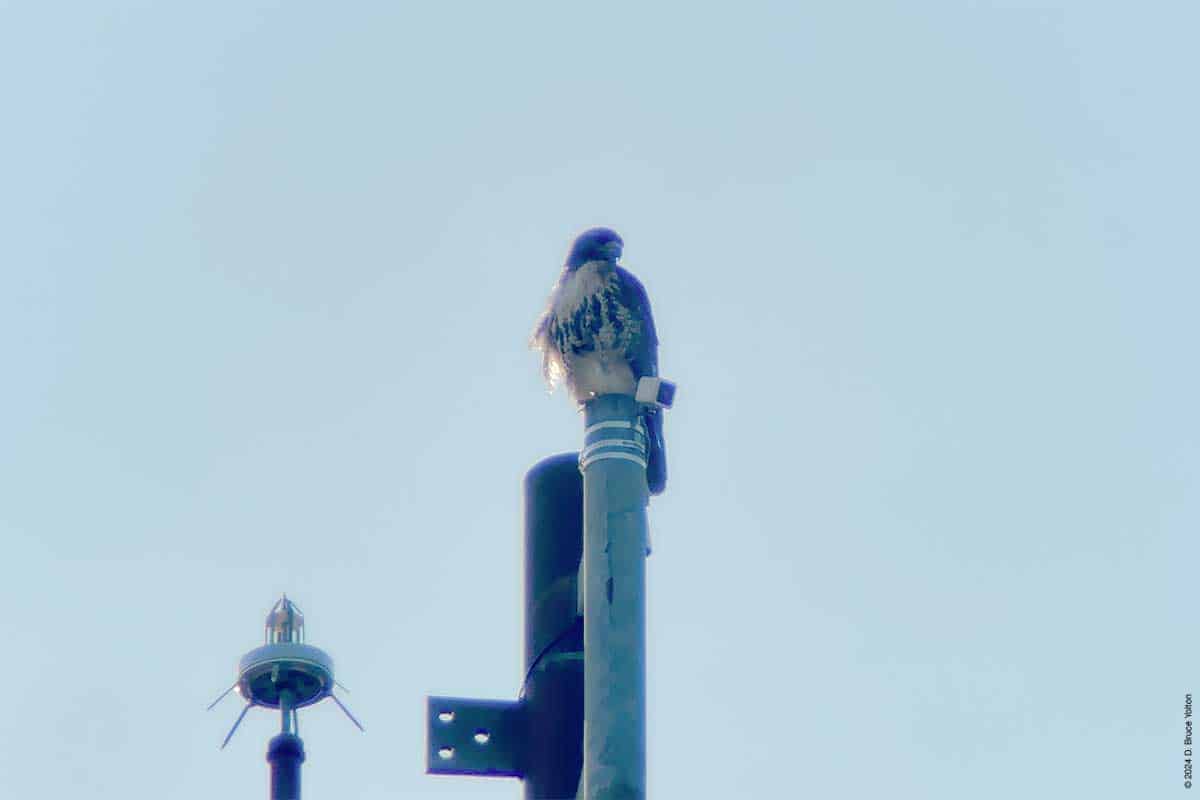
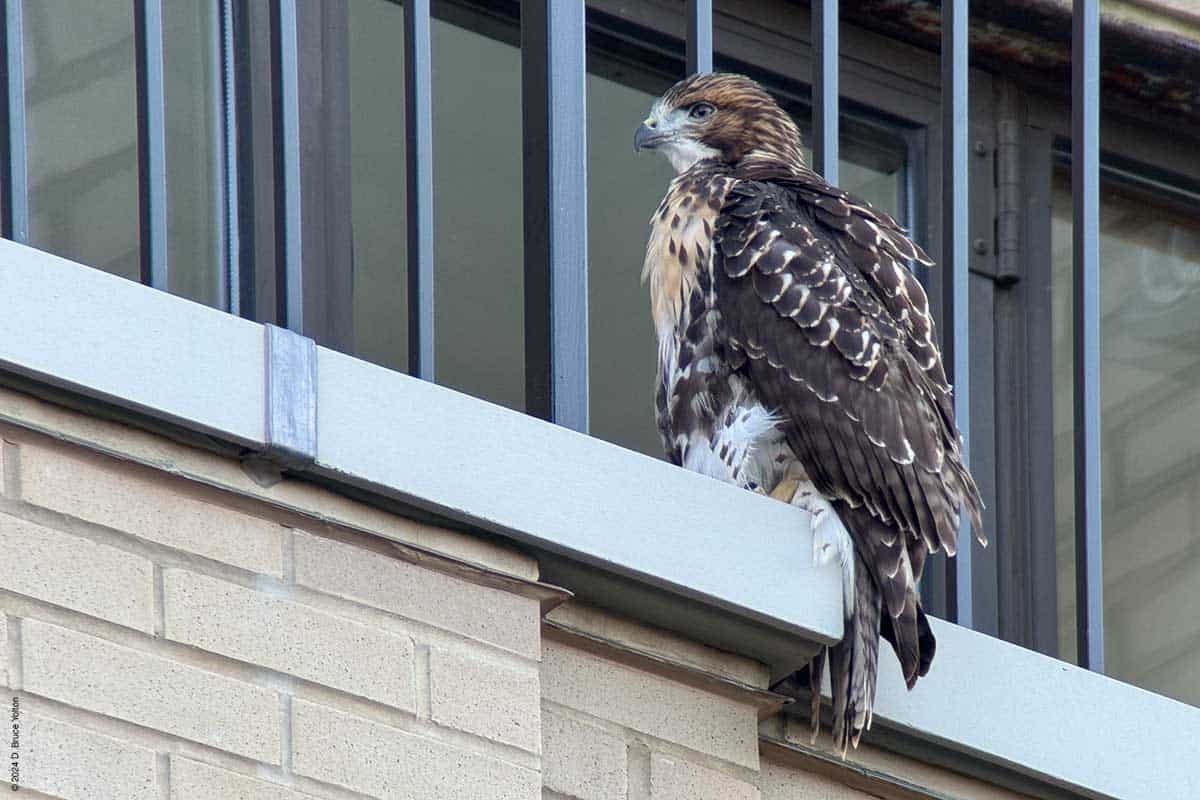
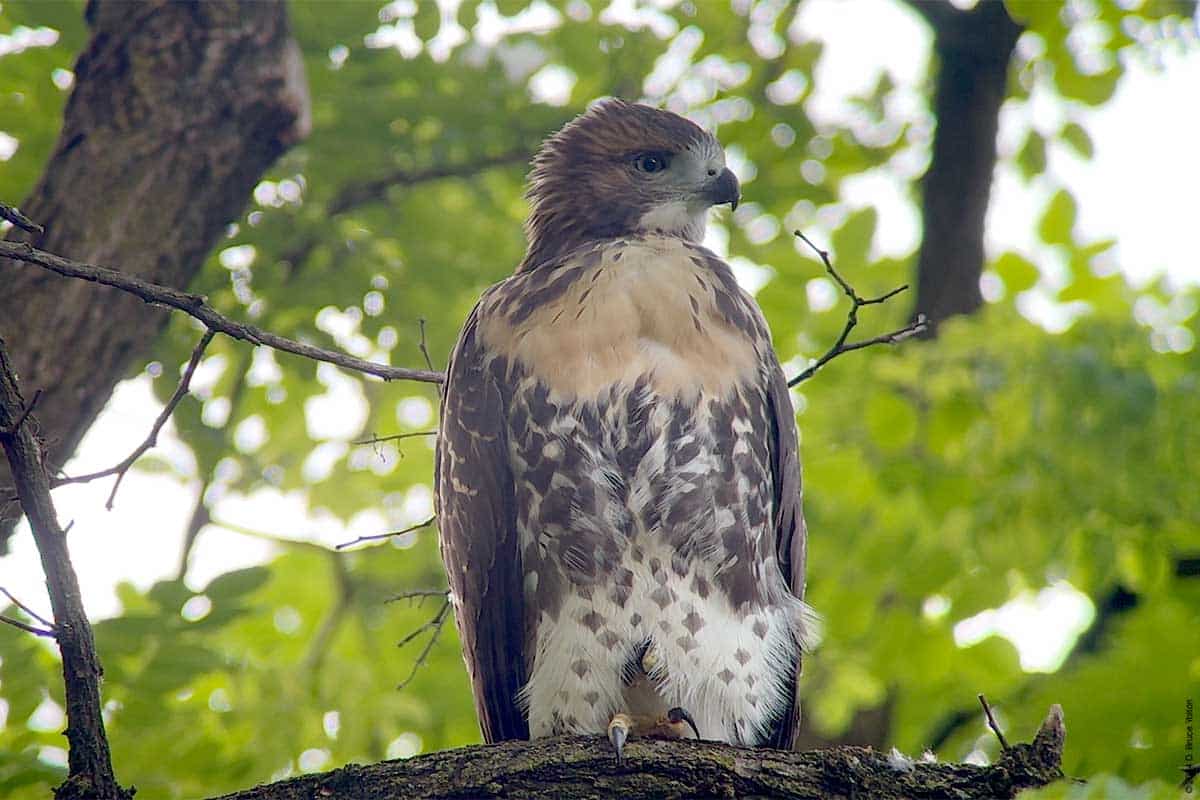
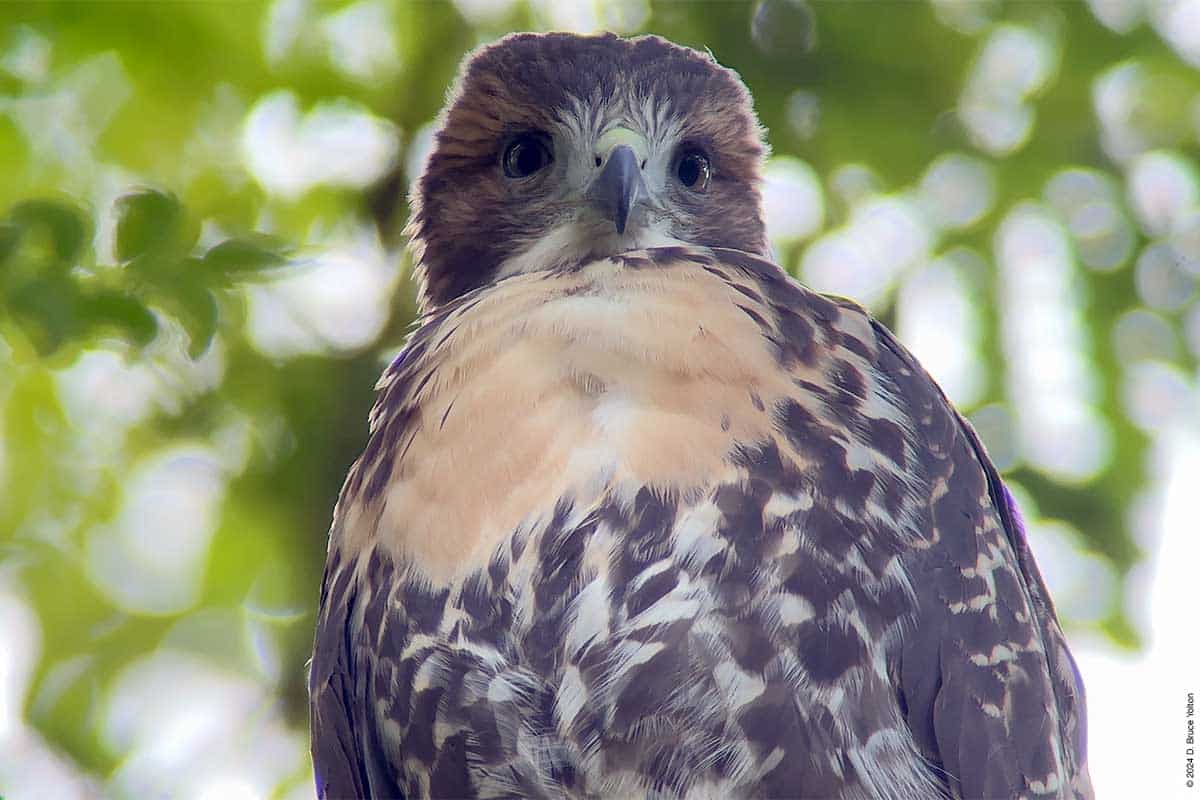
NYAC Fledglings
The NYAC fledglings were using the same area they’ve been using the last few days when I arrived early in the evening. Stella Hamilton was there when I arrived and she kindly showed me where all three of the fledglings were. After having both the mother and one of the fledglings end up spending time at the Wild Bird Fund, having the three settle into a routine is a welcome relief.
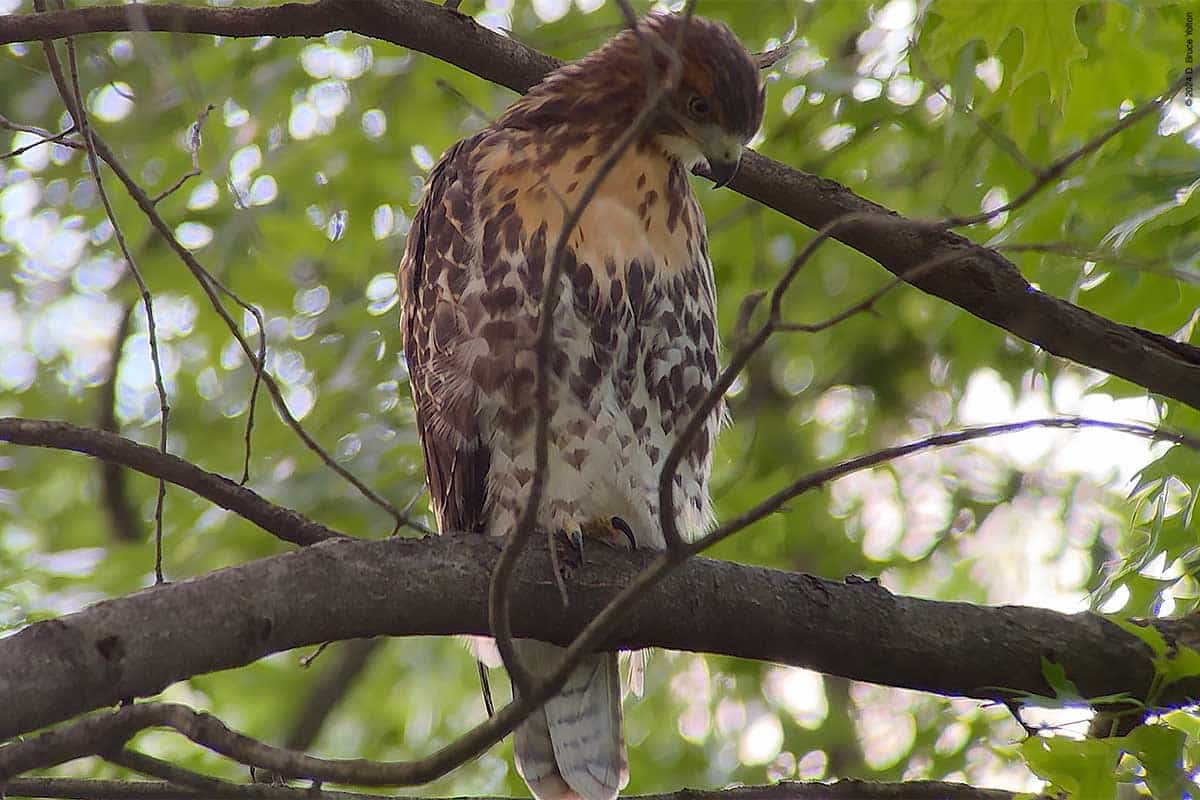
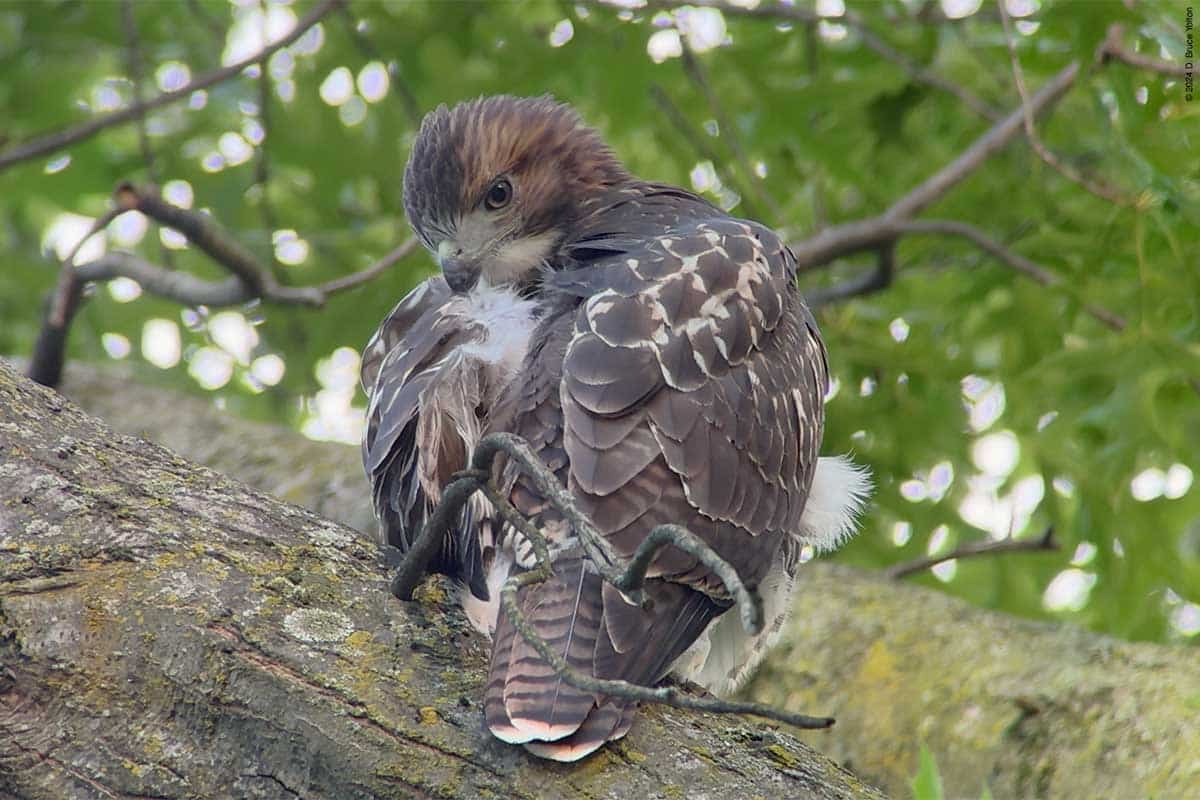
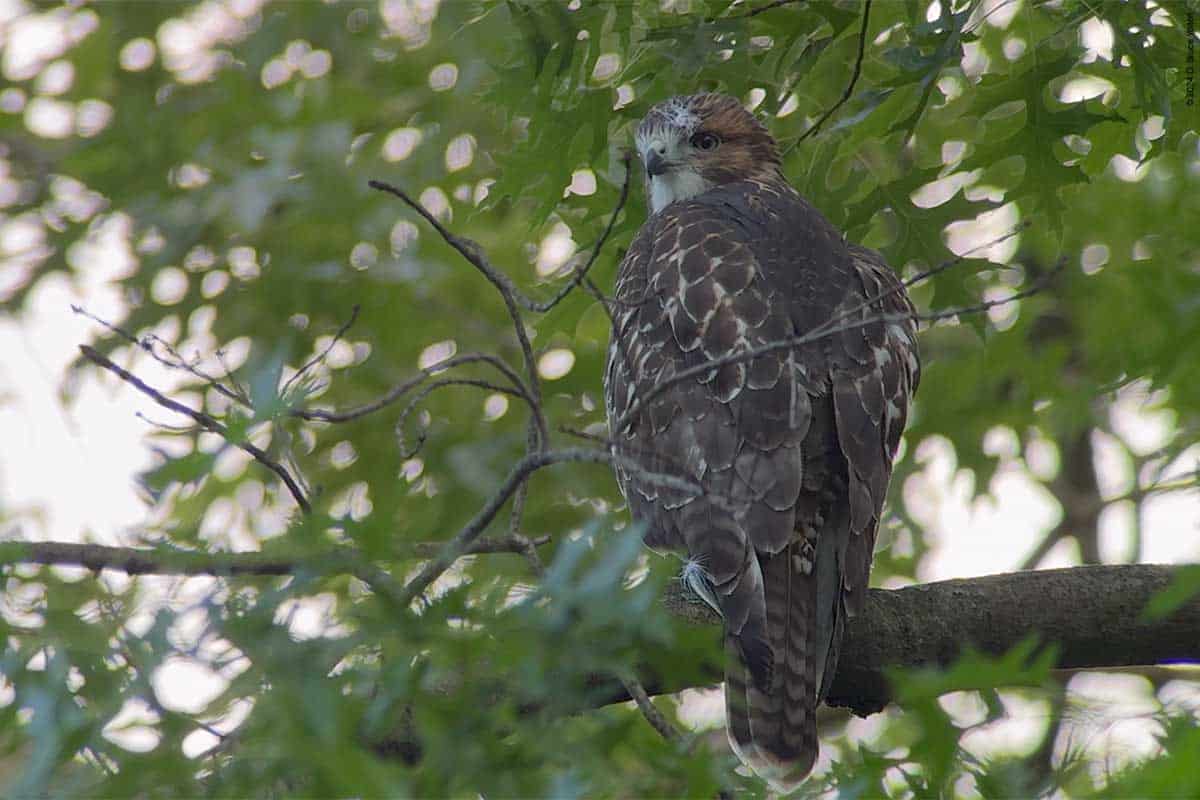
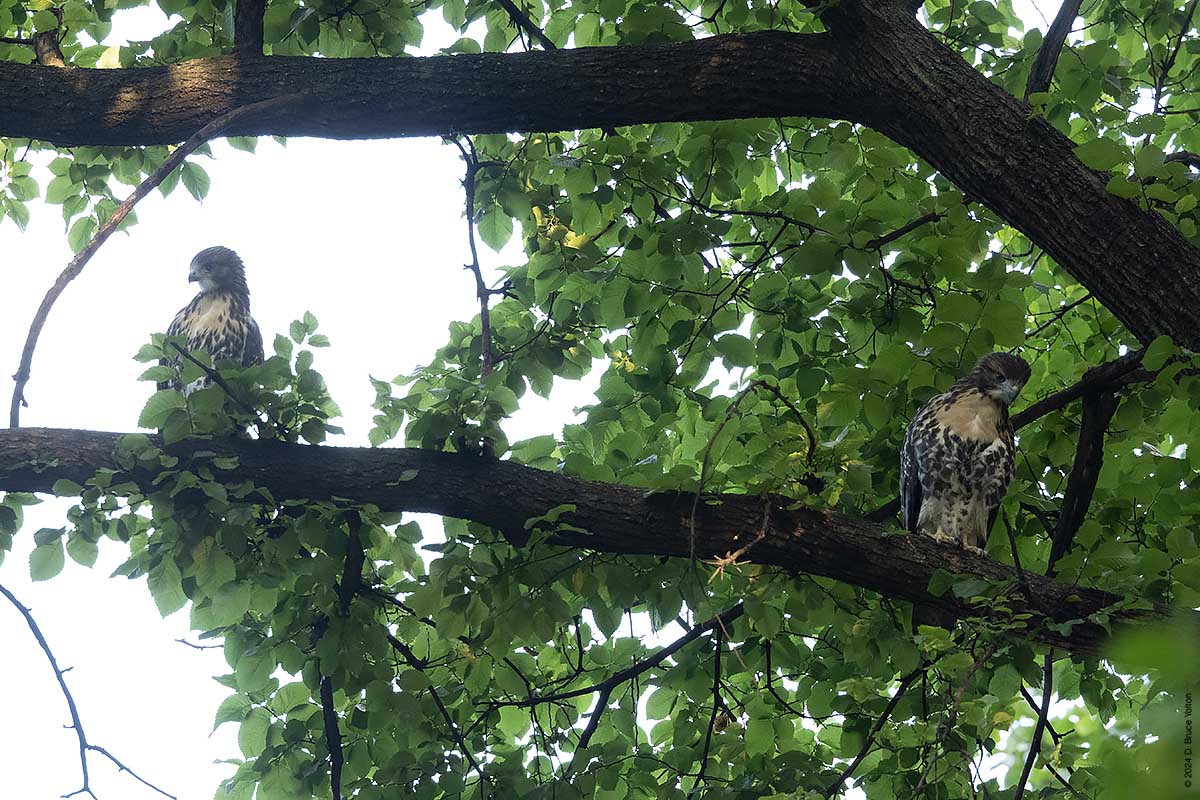
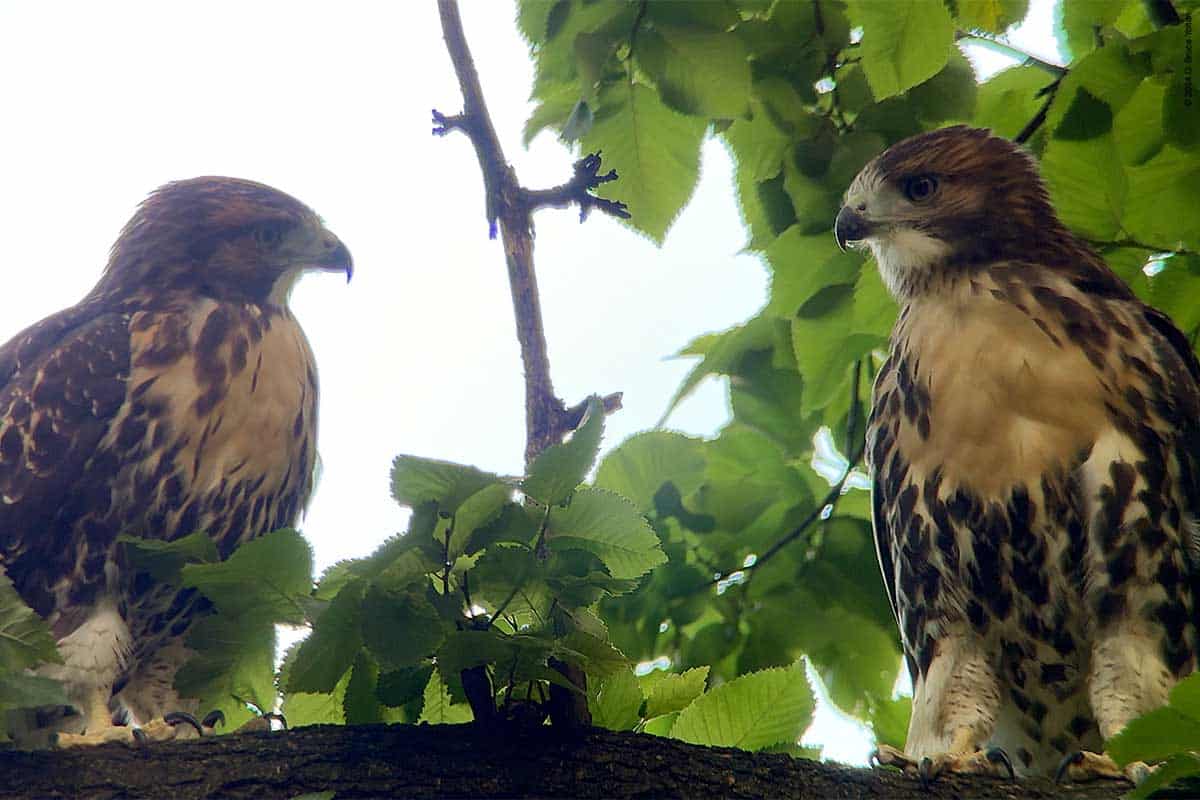
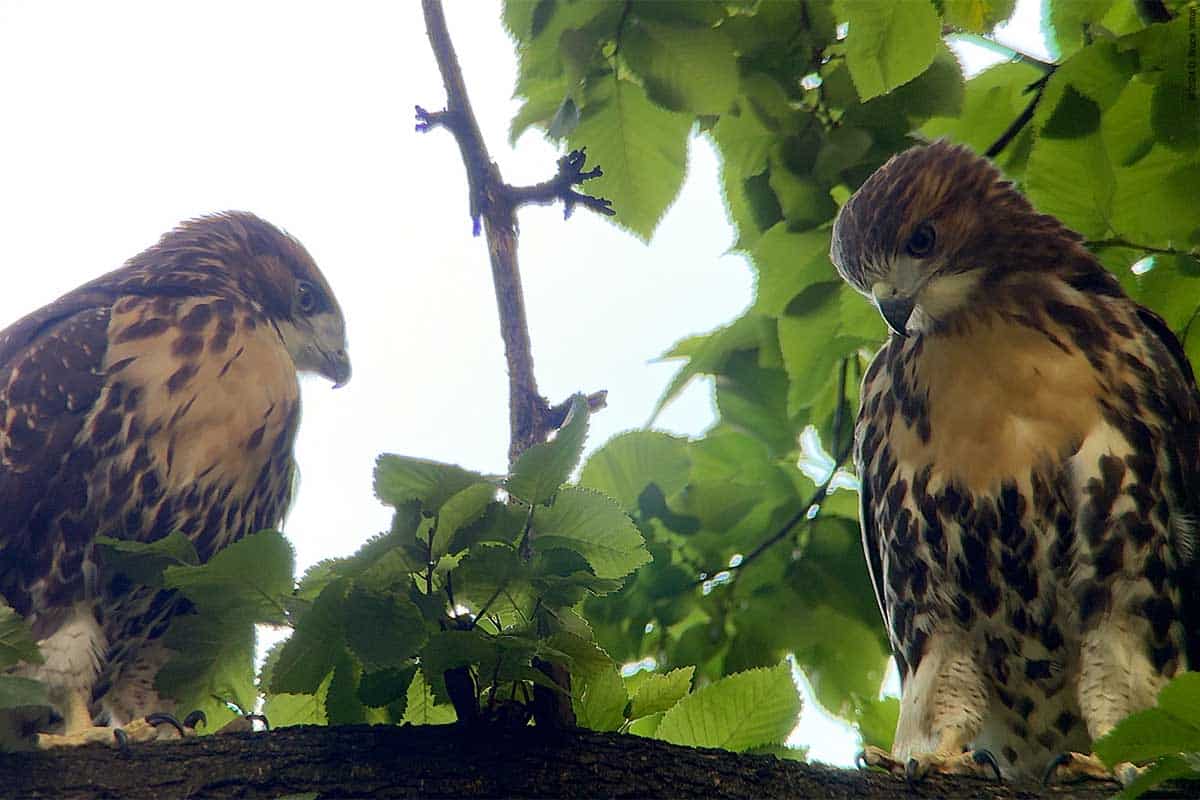
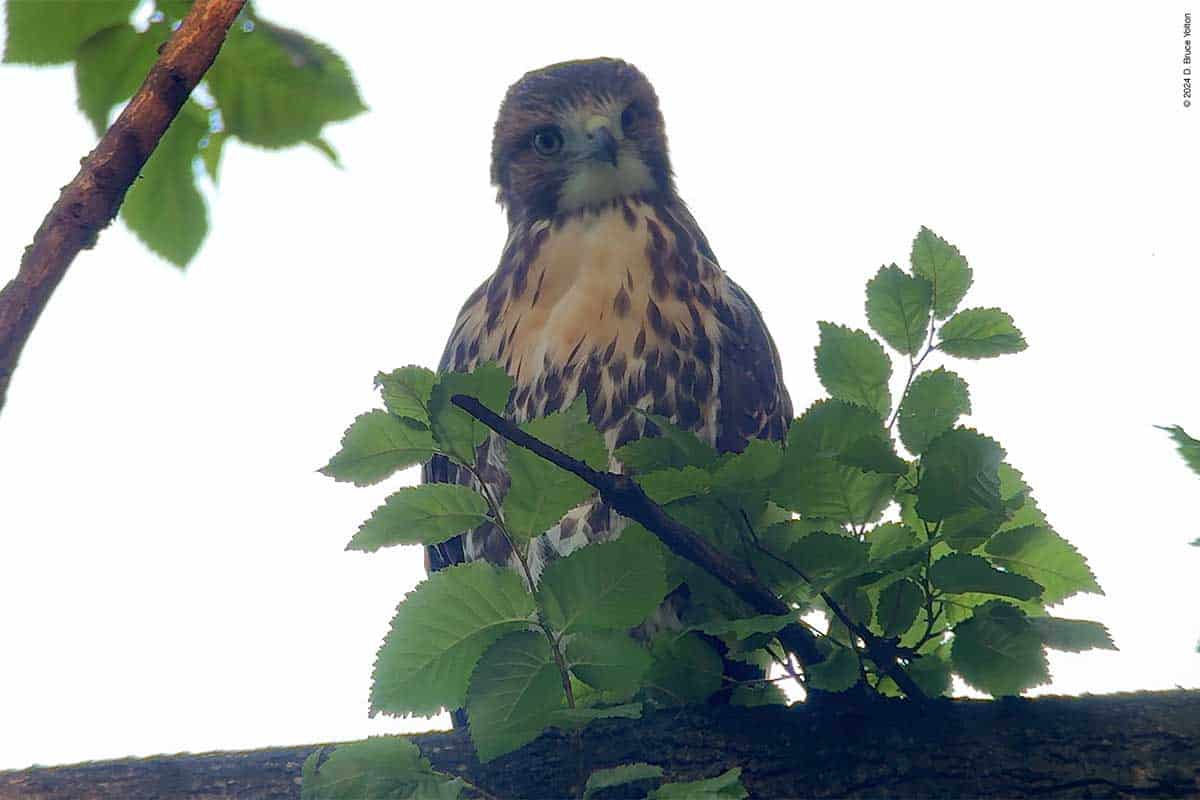
Central Park Fledglings
I made two quick visits to the two Central Park nest location, 93rd/CPW and the NYAC. It was very quiet and I only could one fledgling at each location and the mother at 93rd/CPW.
This is typical as we move into June. The fledglings become harder and harder to locate.
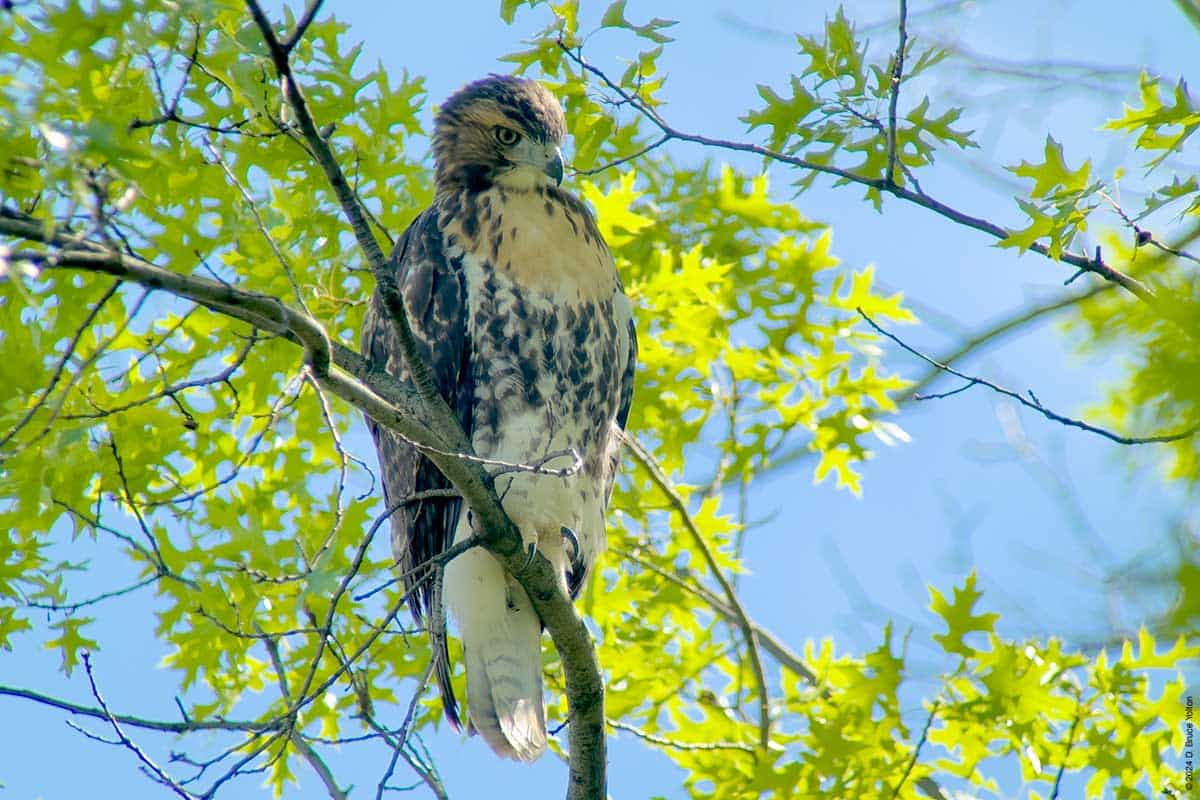
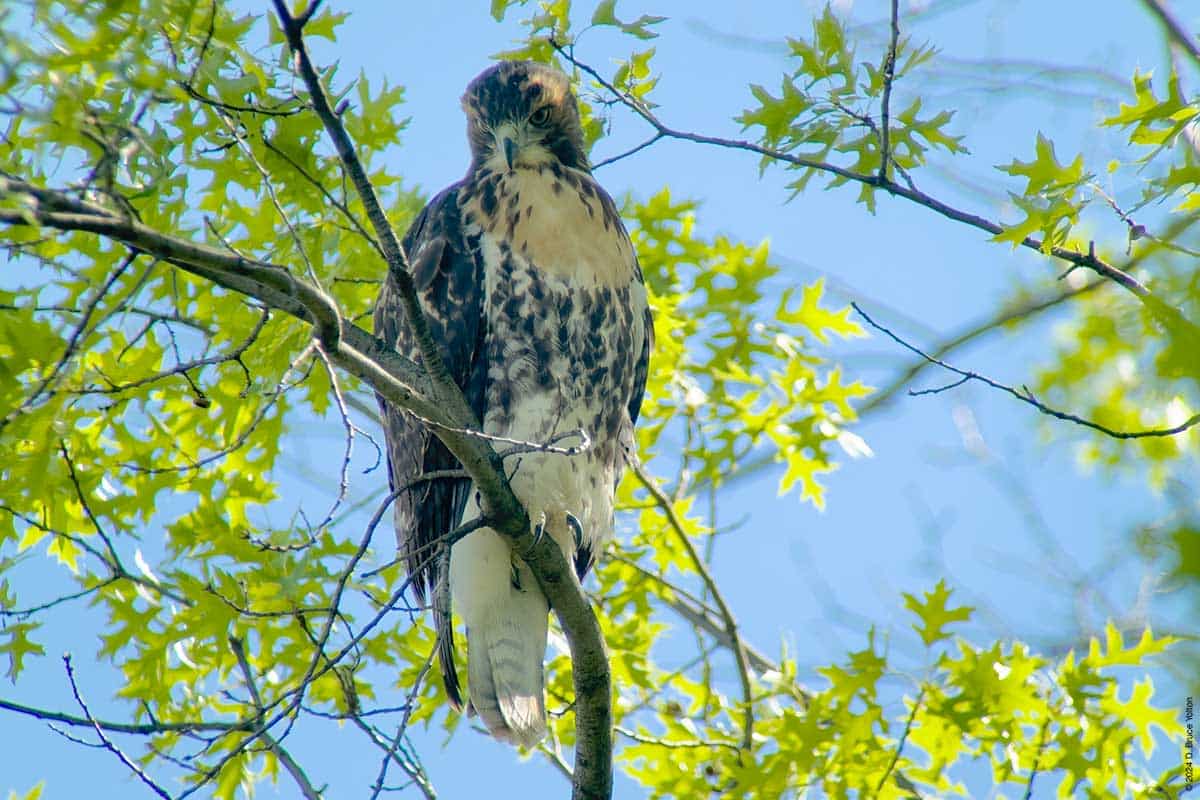
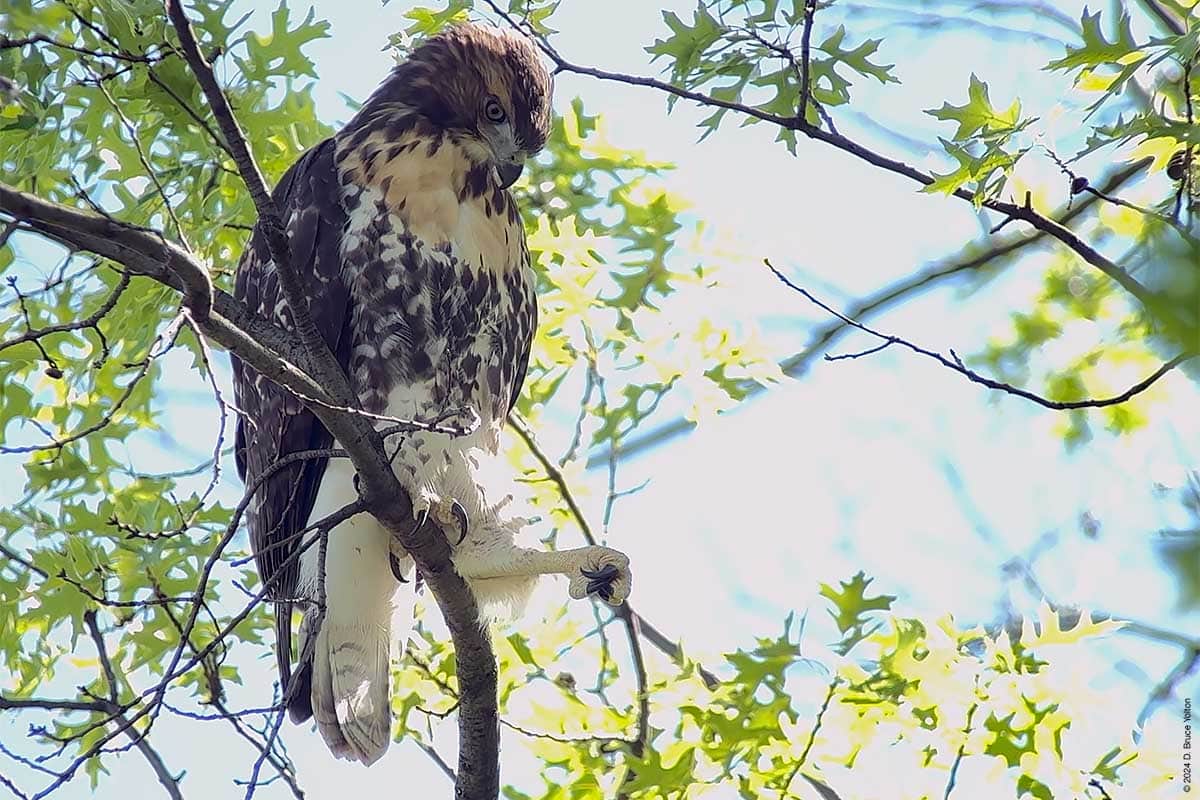
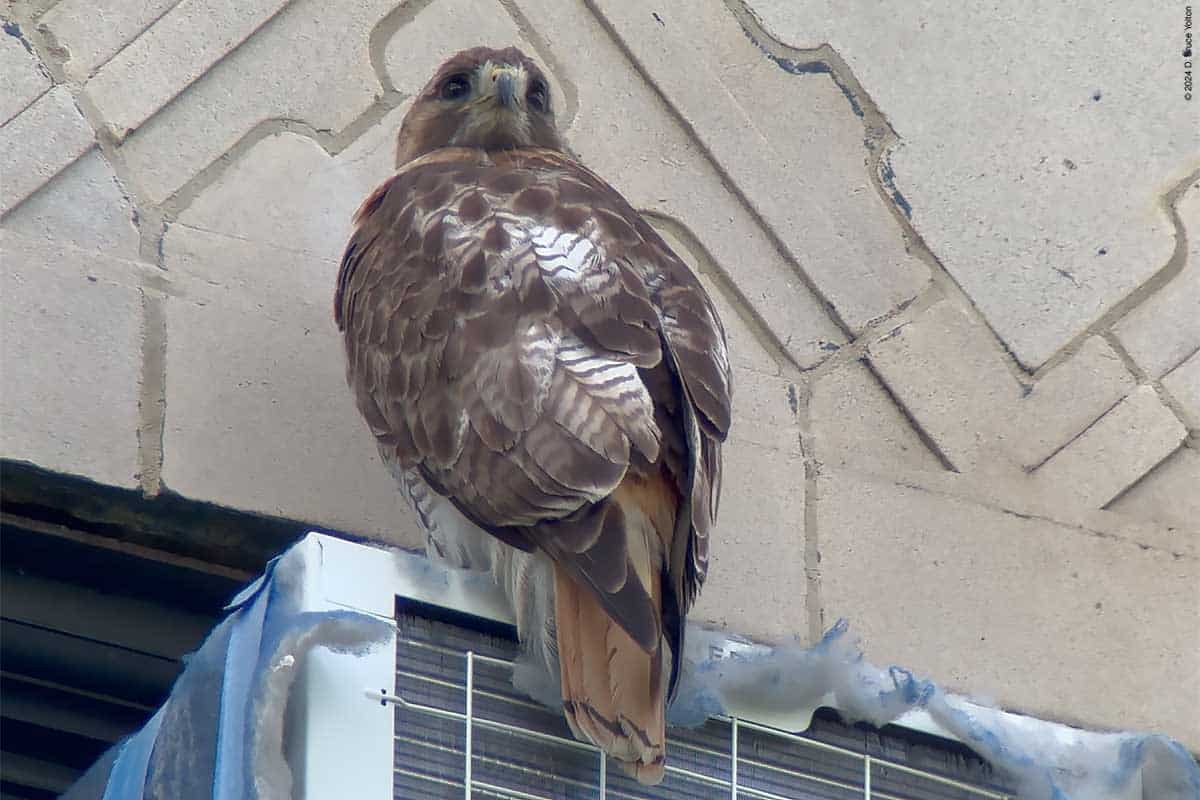
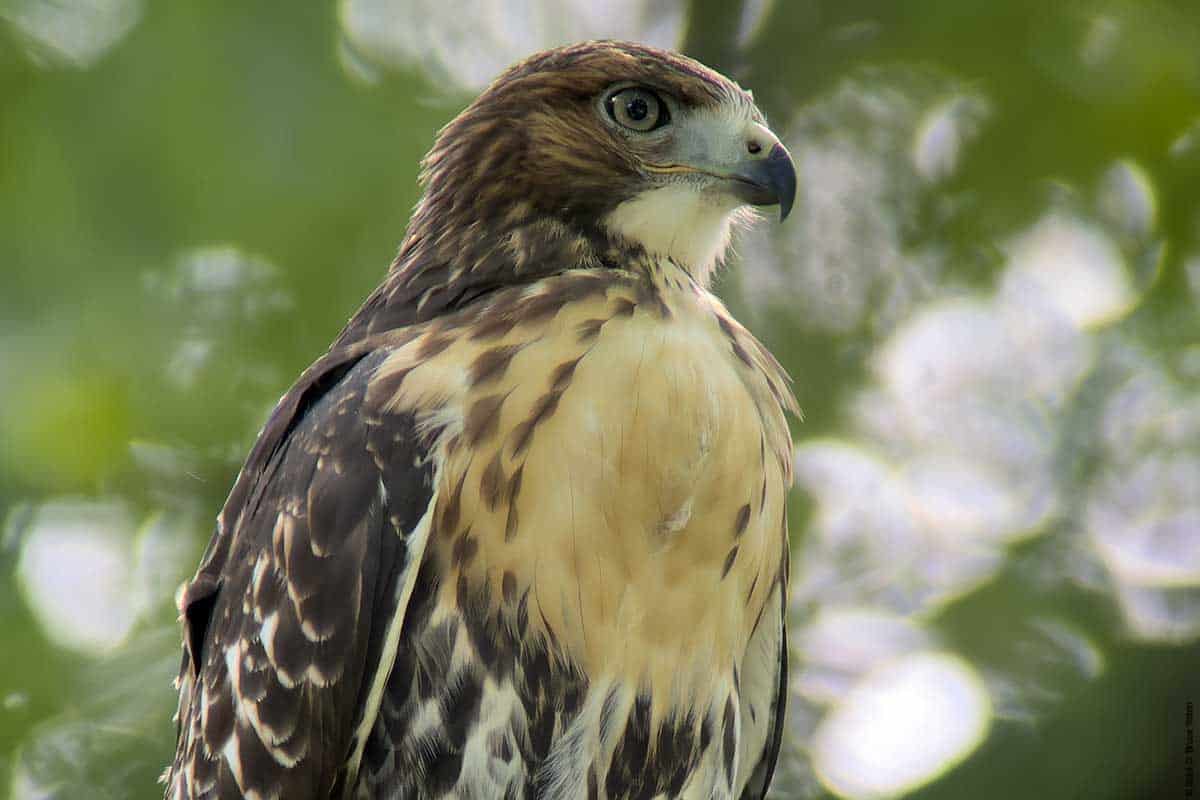
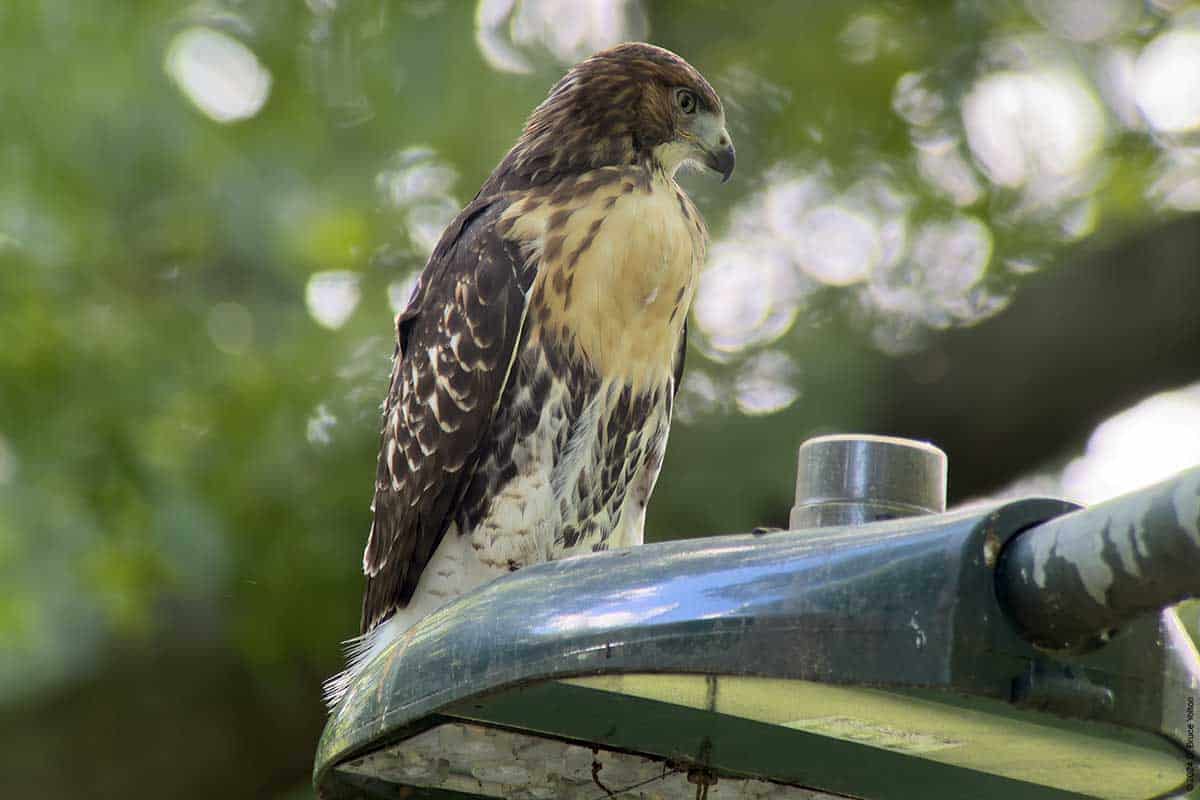
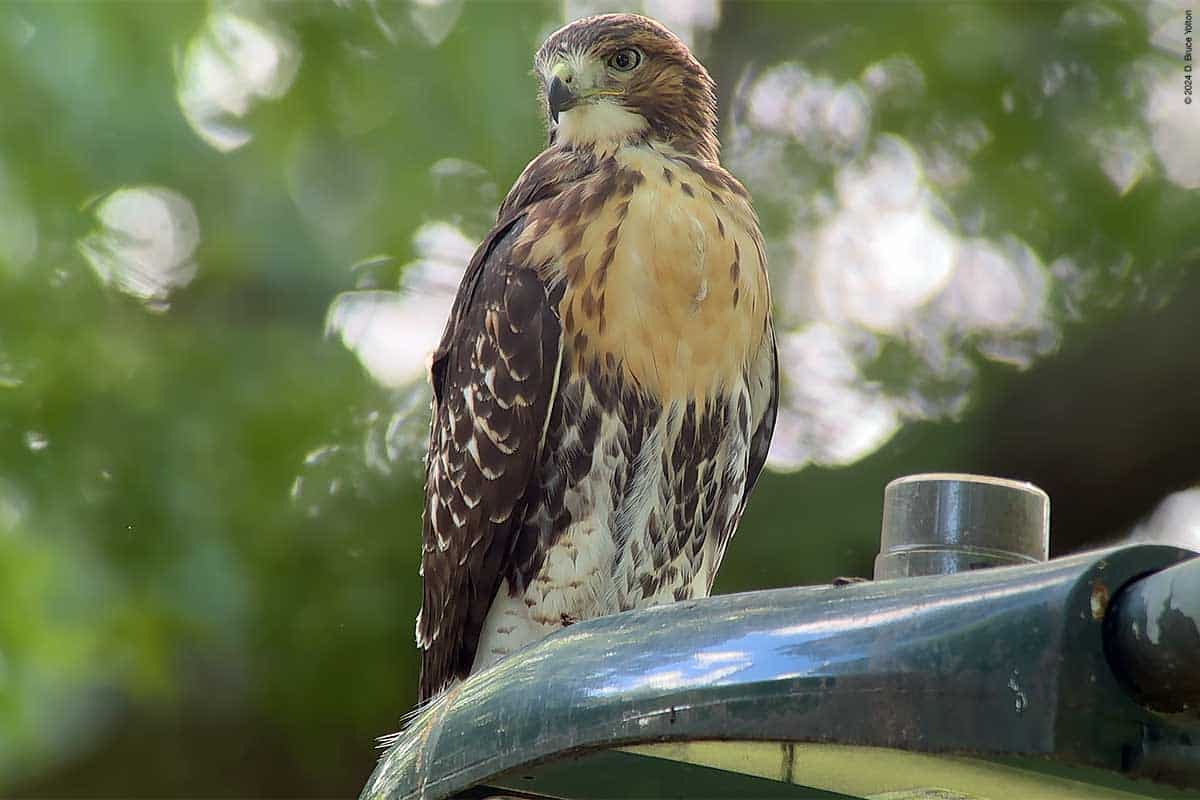
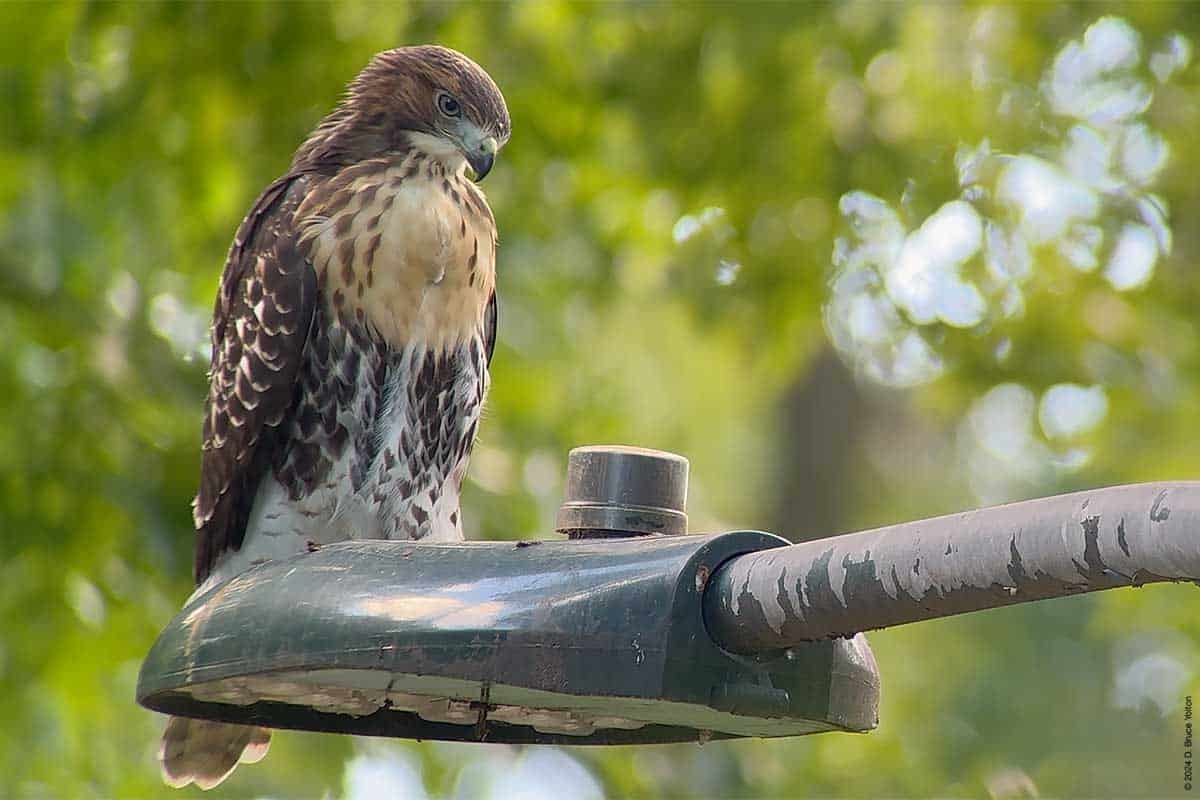
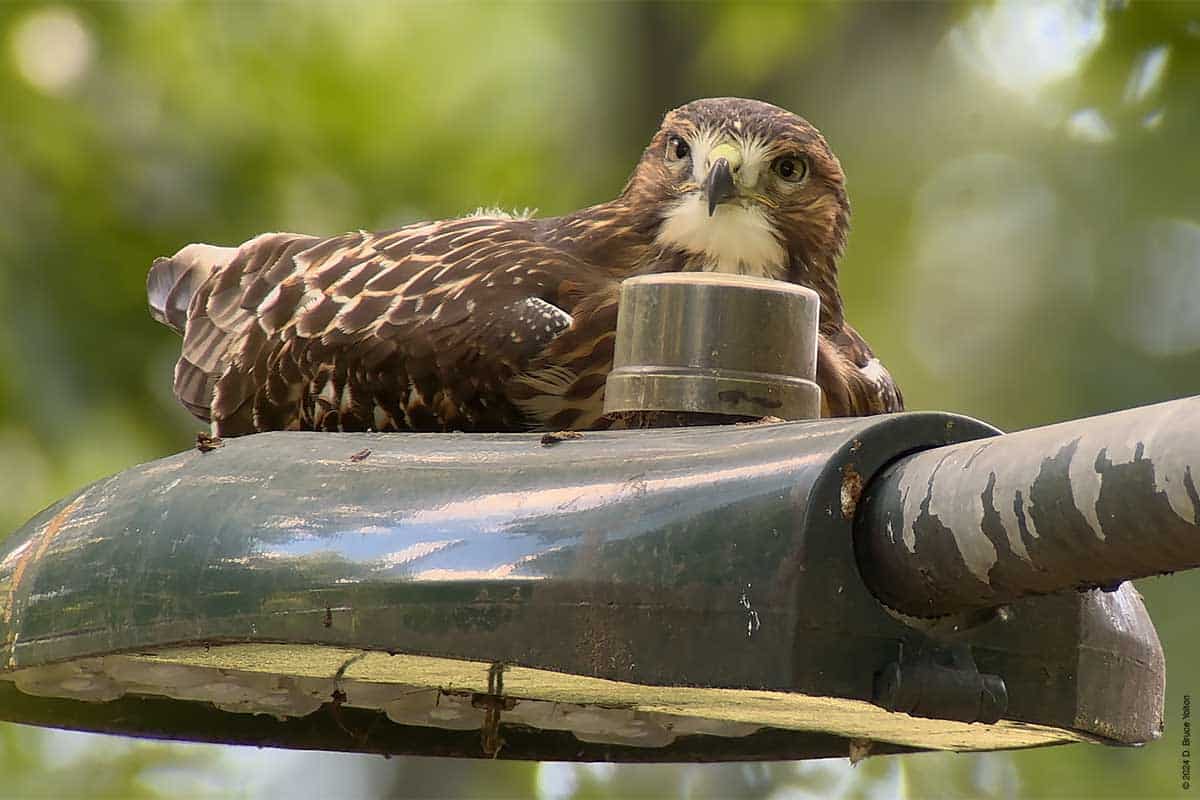
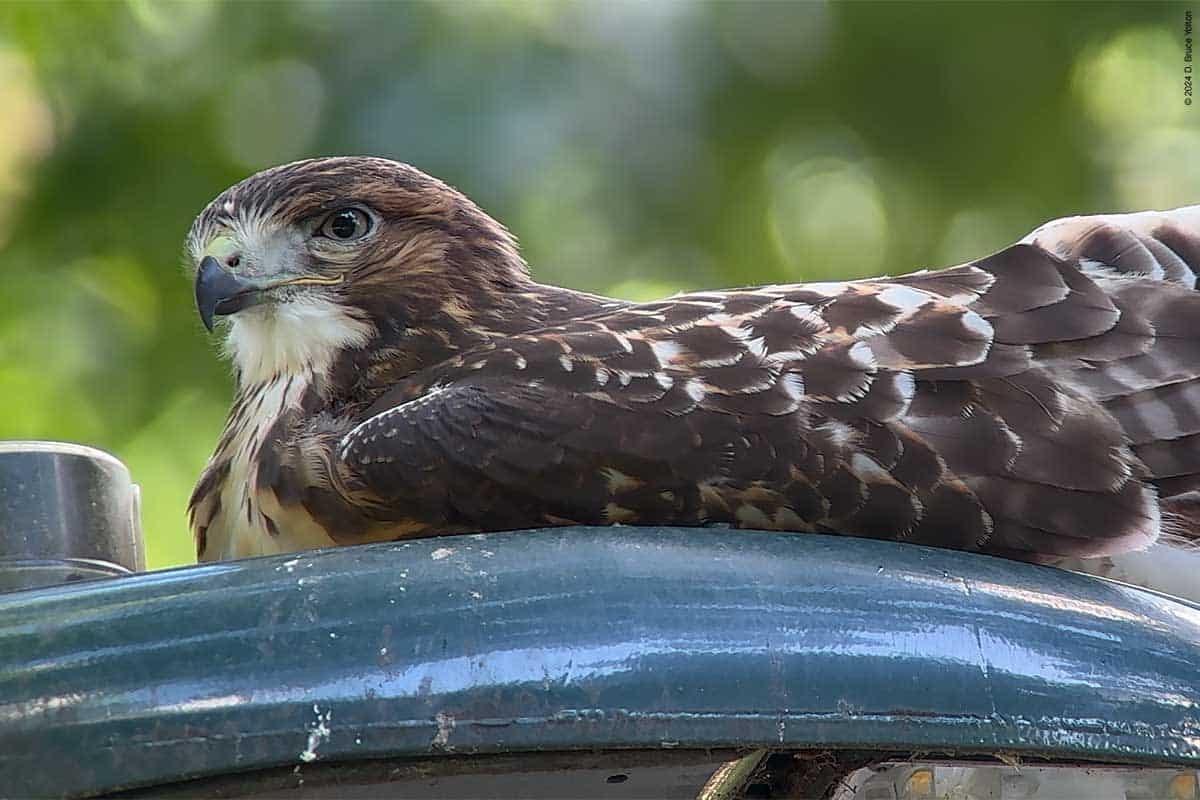
NYAC Family
I stopped by the NYAC family on my way home from Riverside Church and today was much like yesterday. The fledglings using trees and street lamps in the park west and north of Central Park South and Seventh Avenue.
One extraordinary things happened however. One of the parents seeing a squirrel attack one the fledglings, quickly caught it and carried it 100 feet away. The parent lost its grip on the squirrel when it landed and the squirrel fell 25 feet. The squirrel was able to climb up a tree, but kept close eye on the hawk until it flew off.
